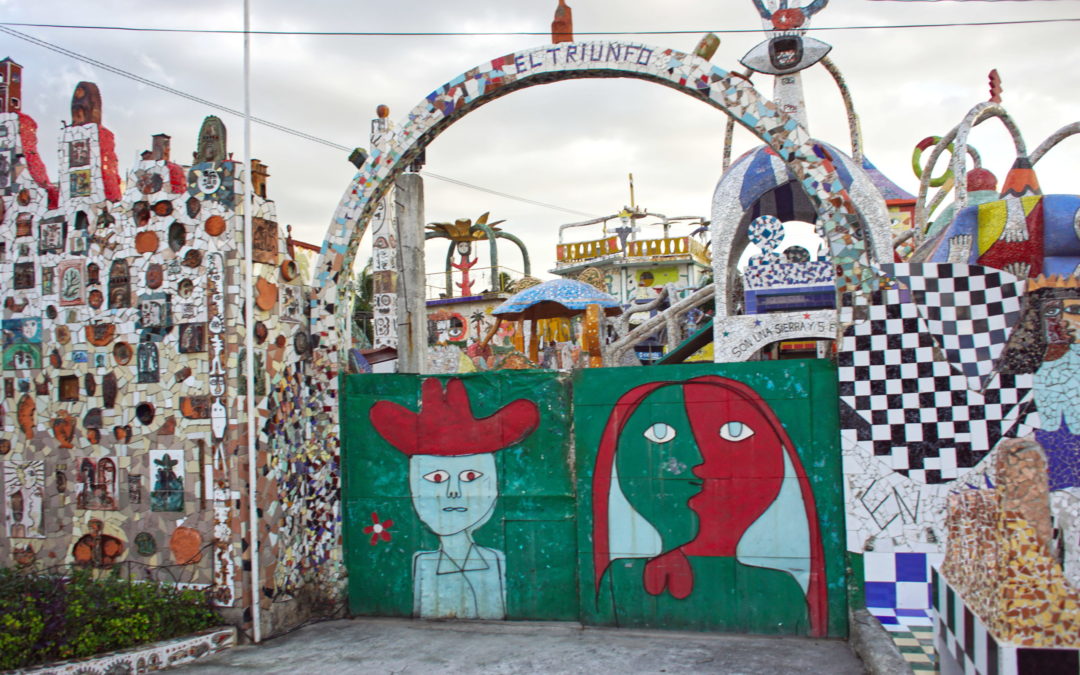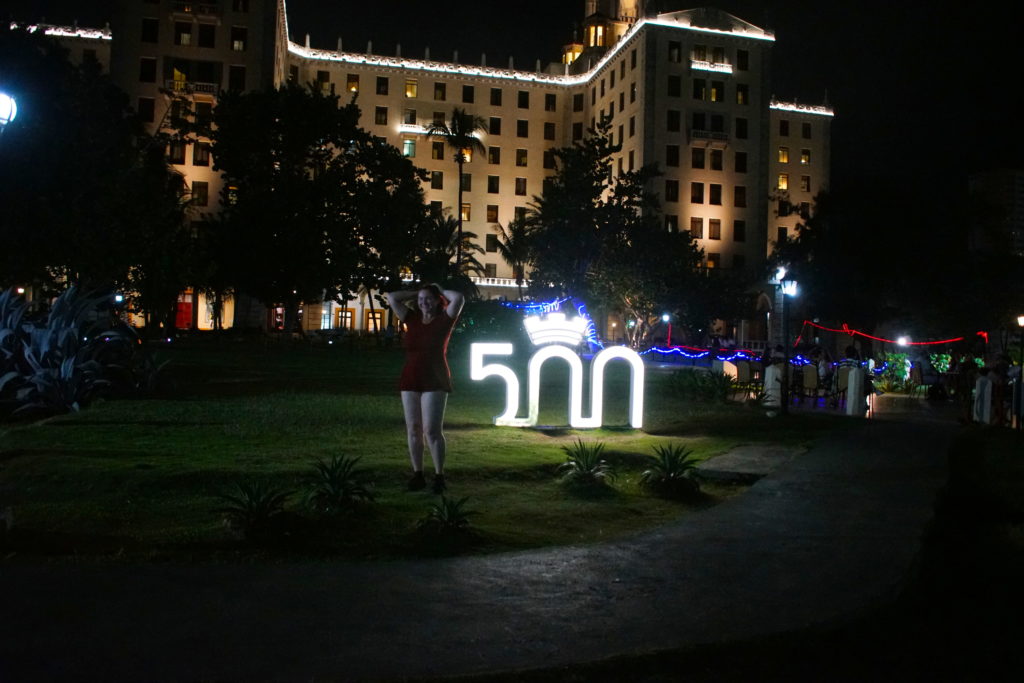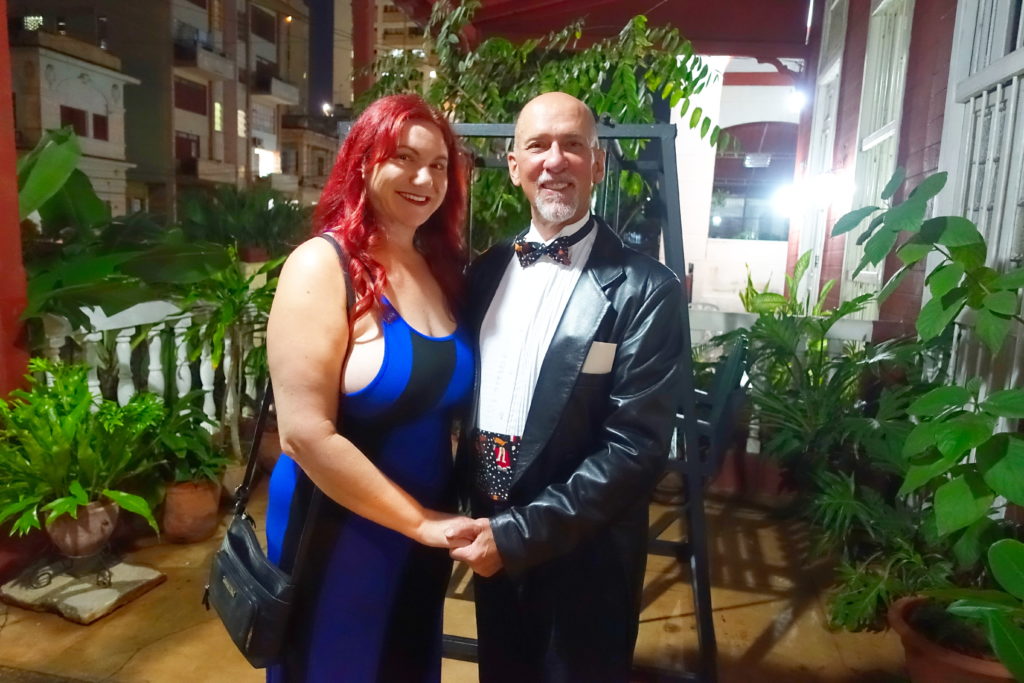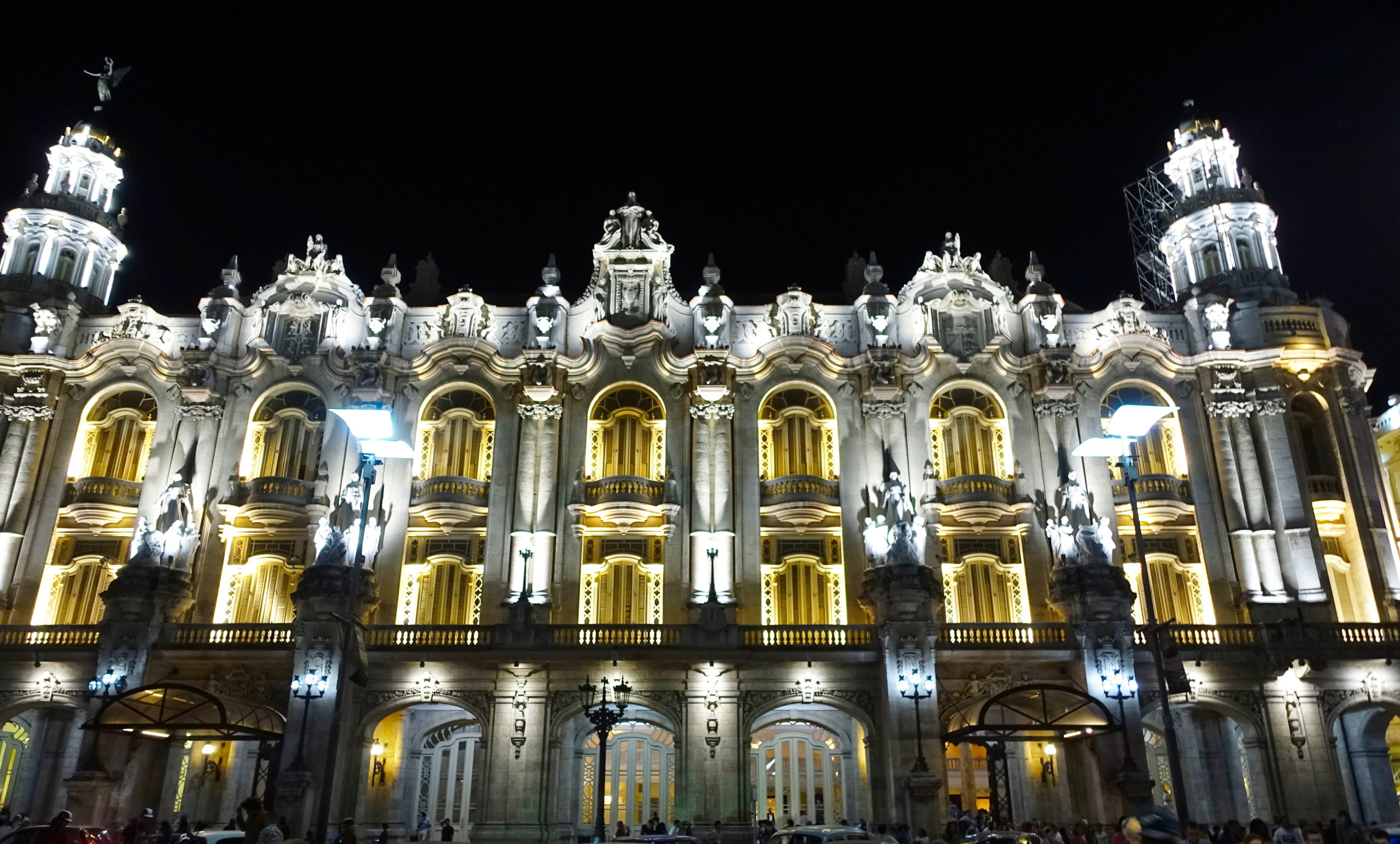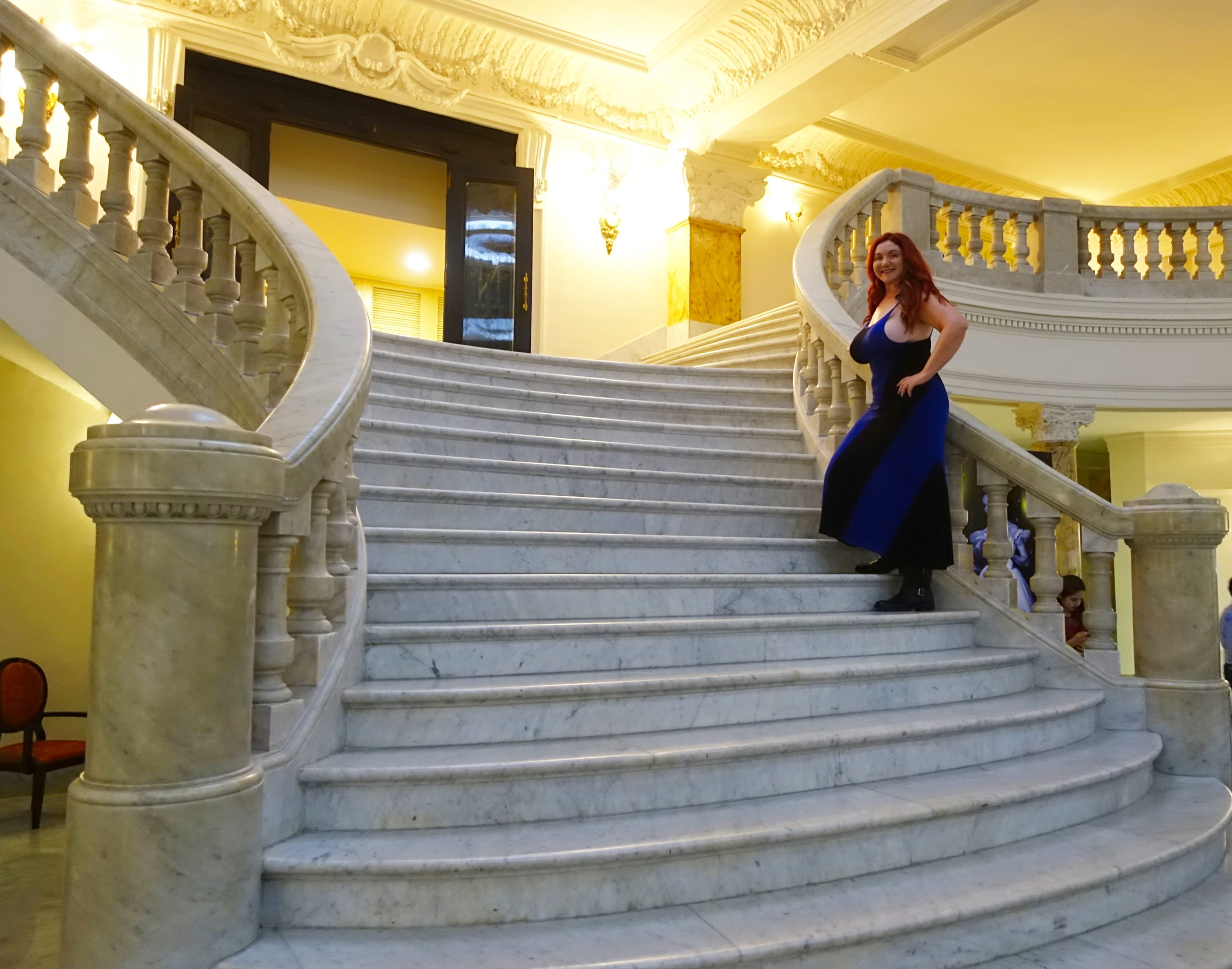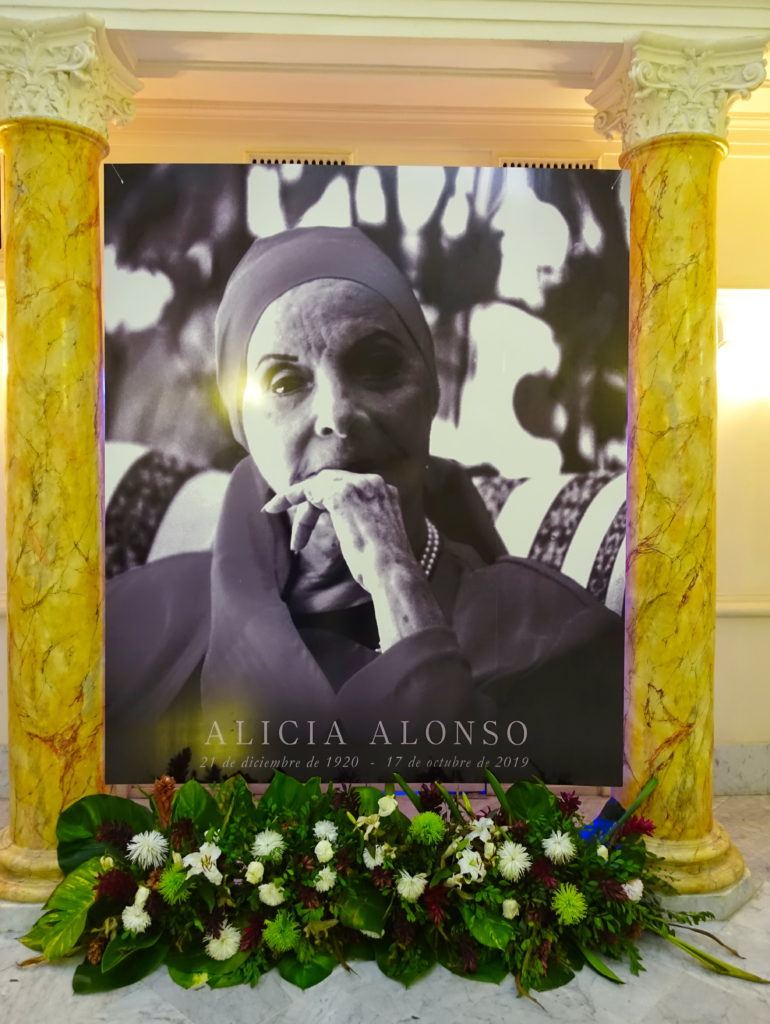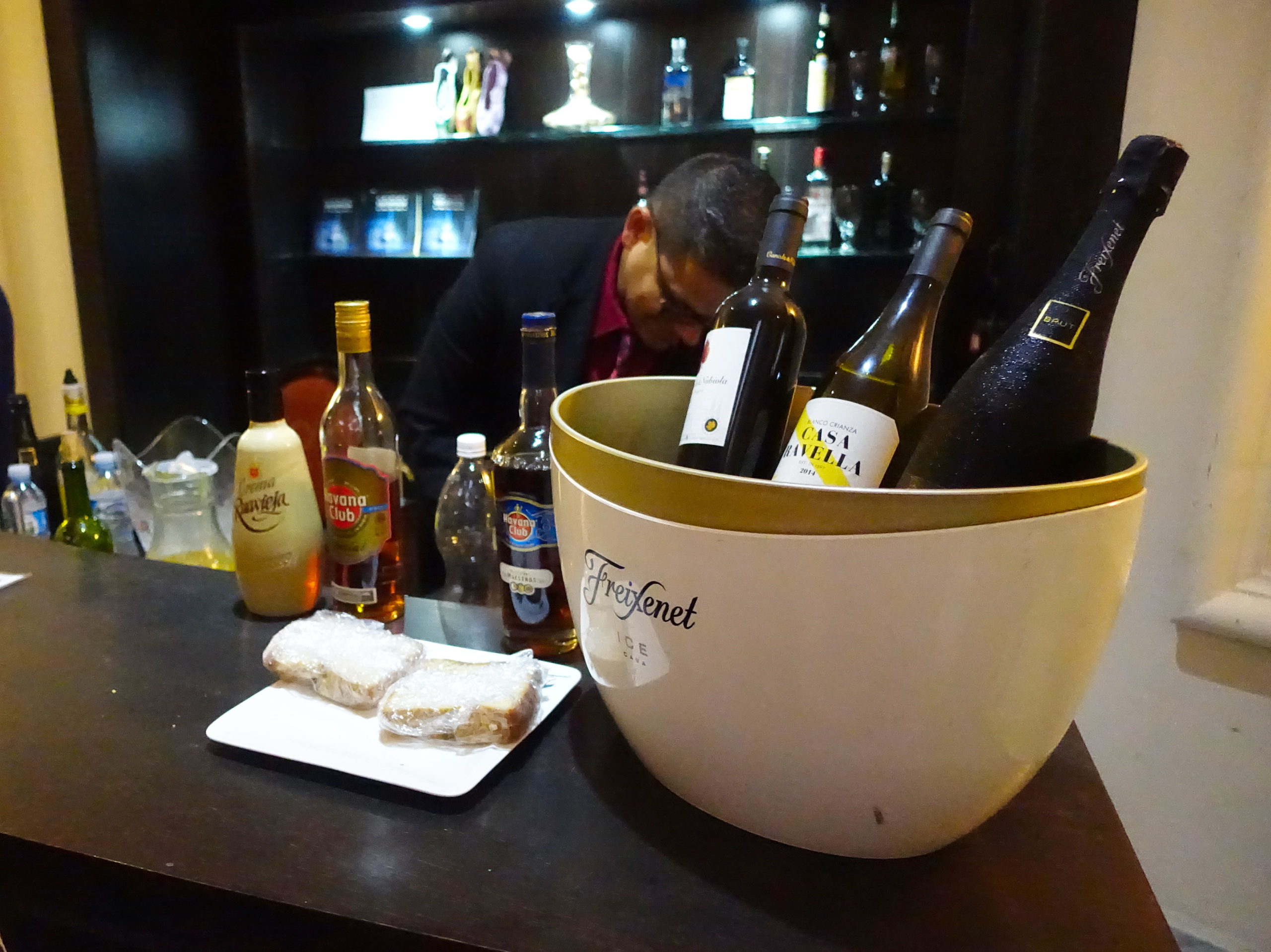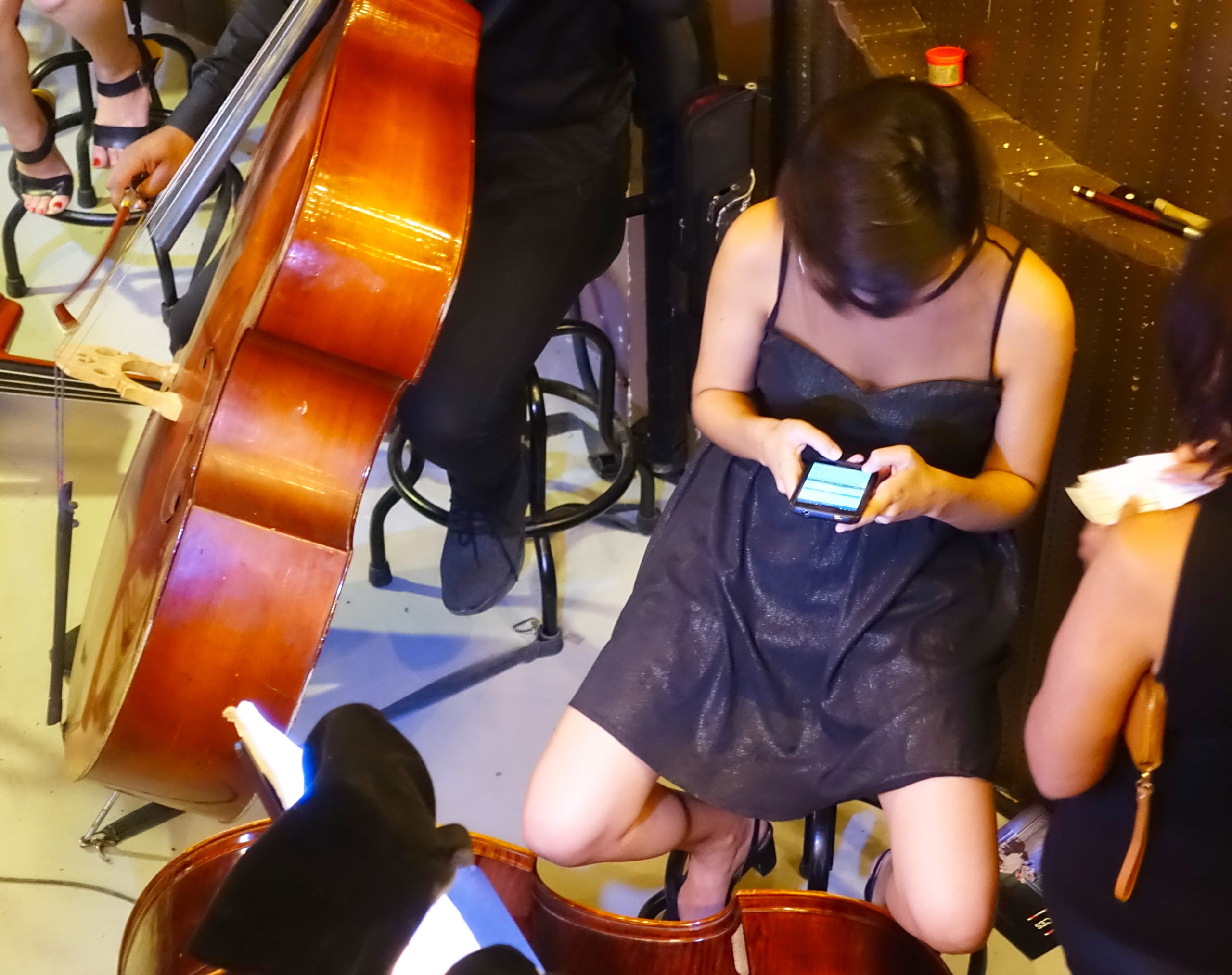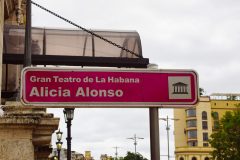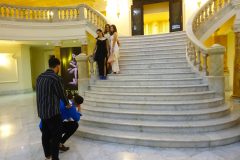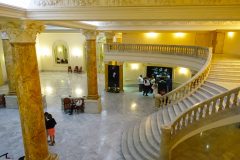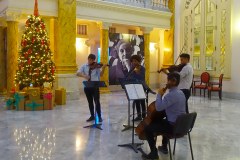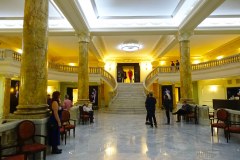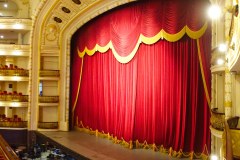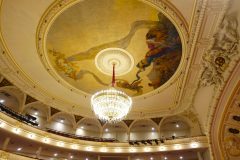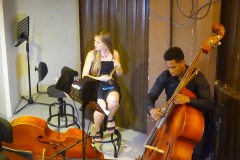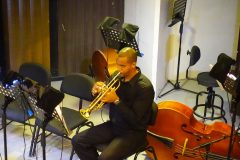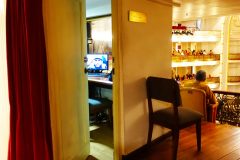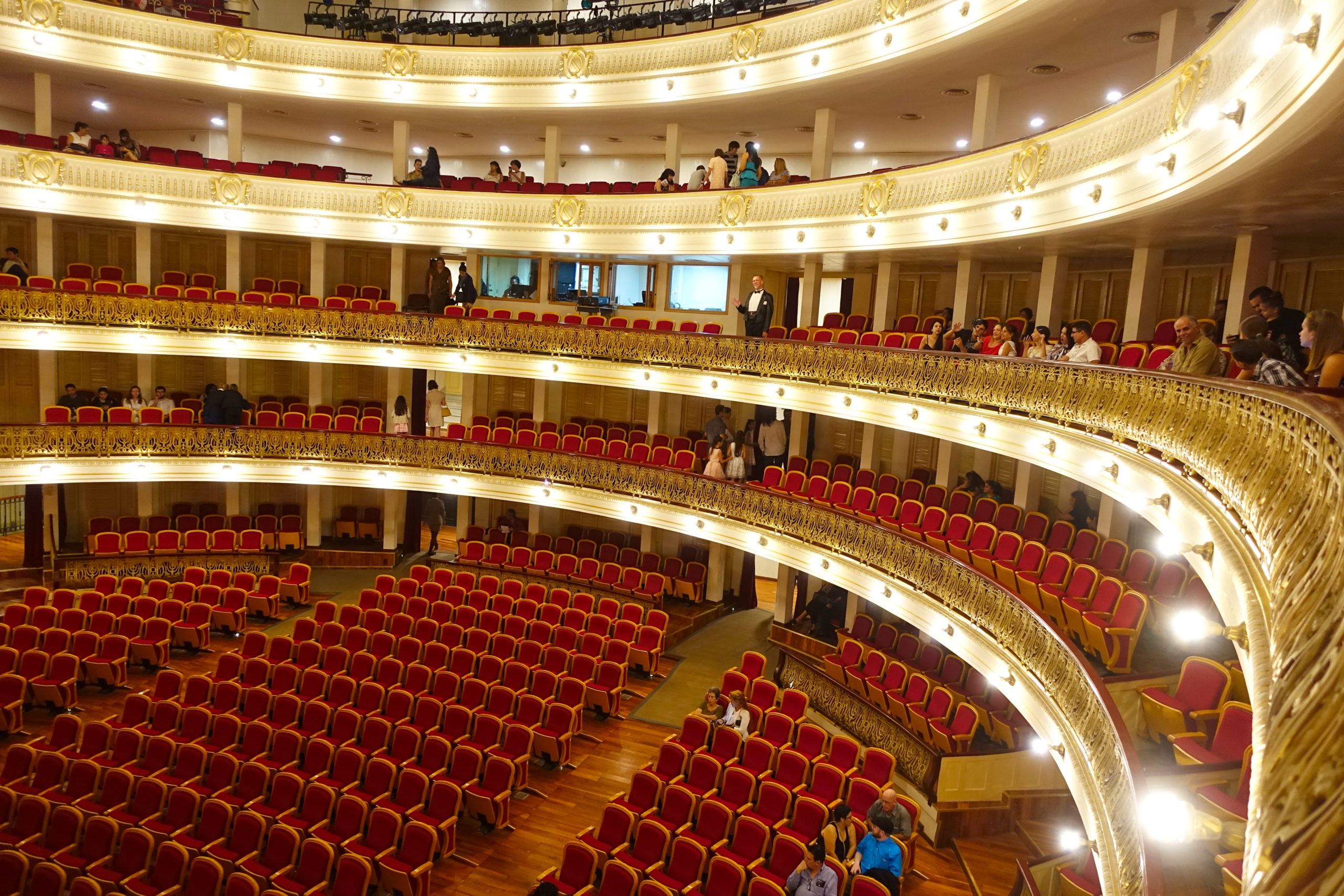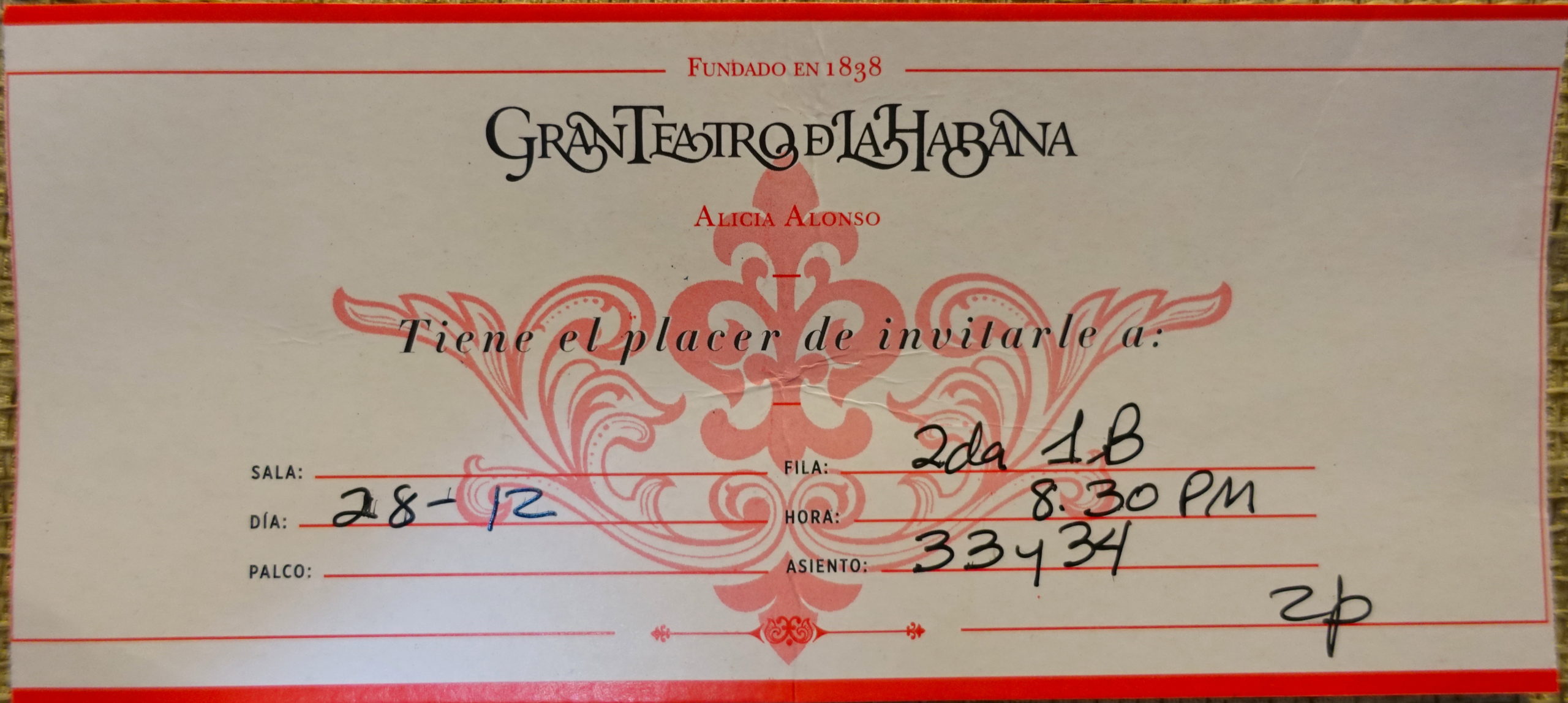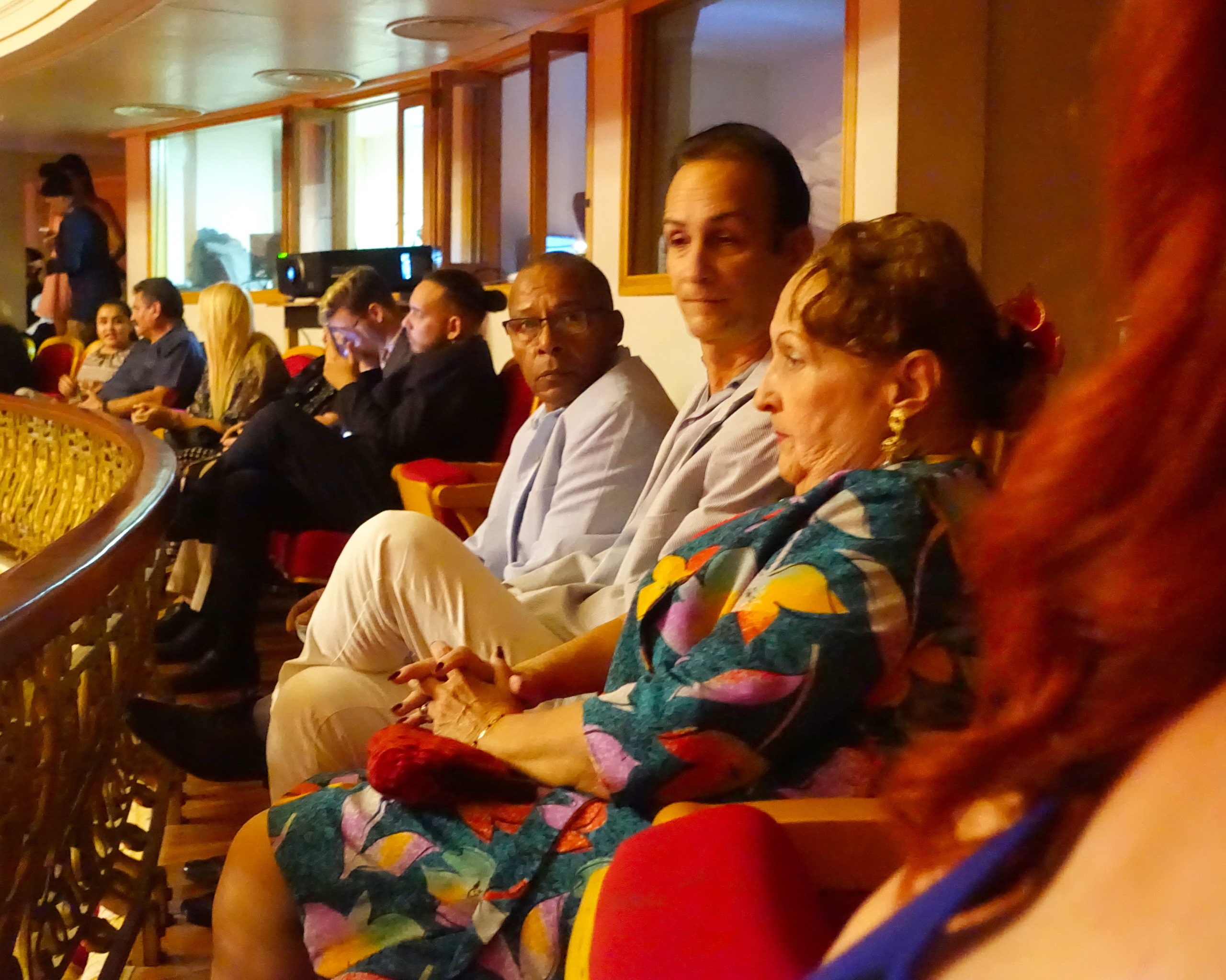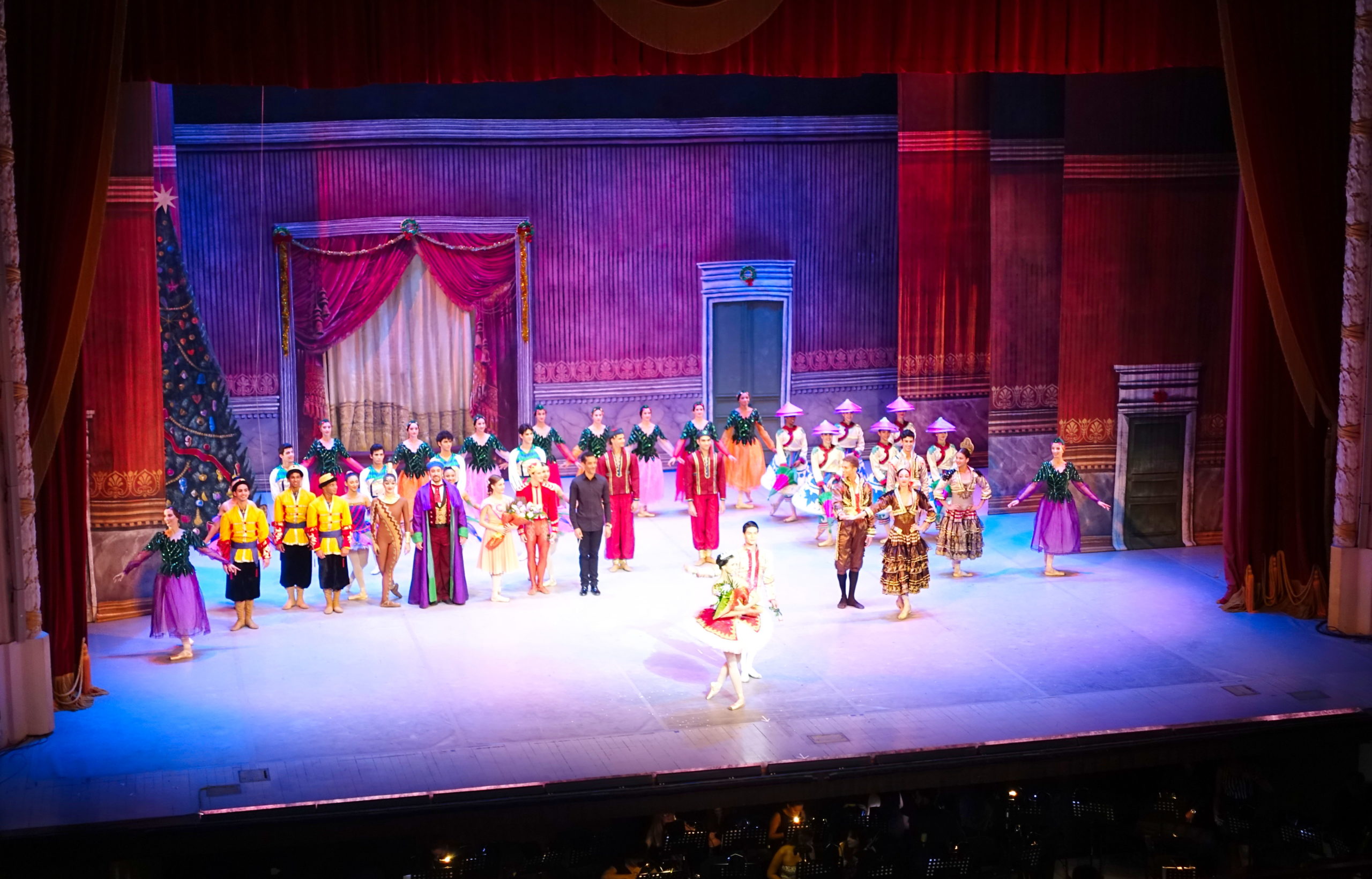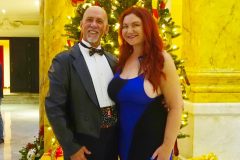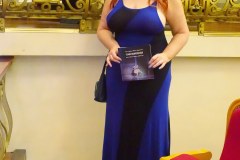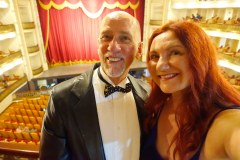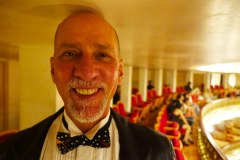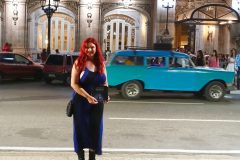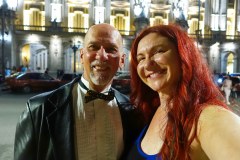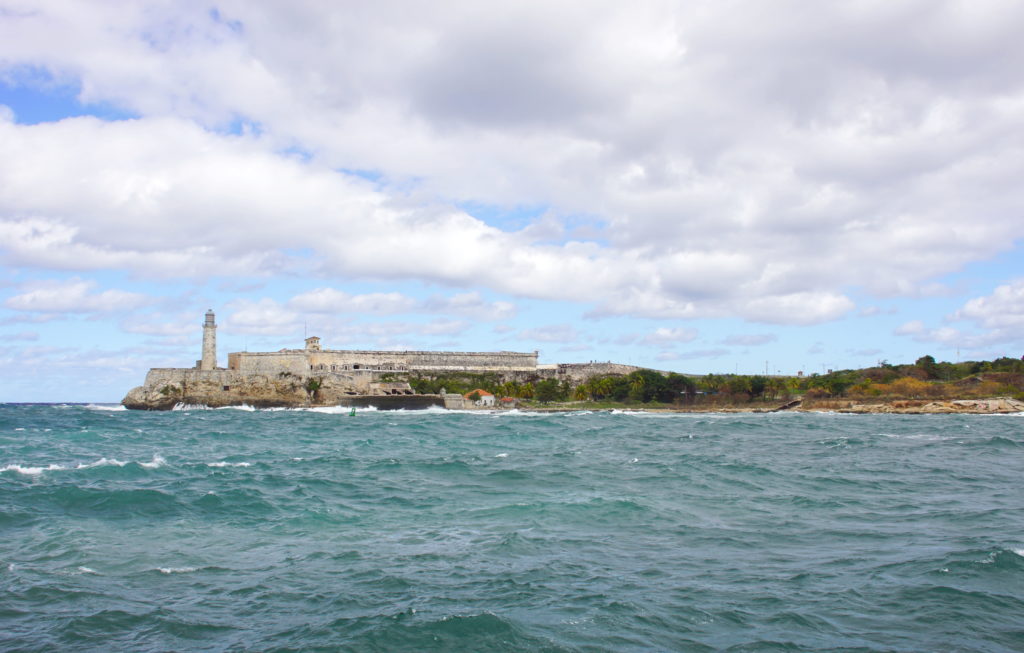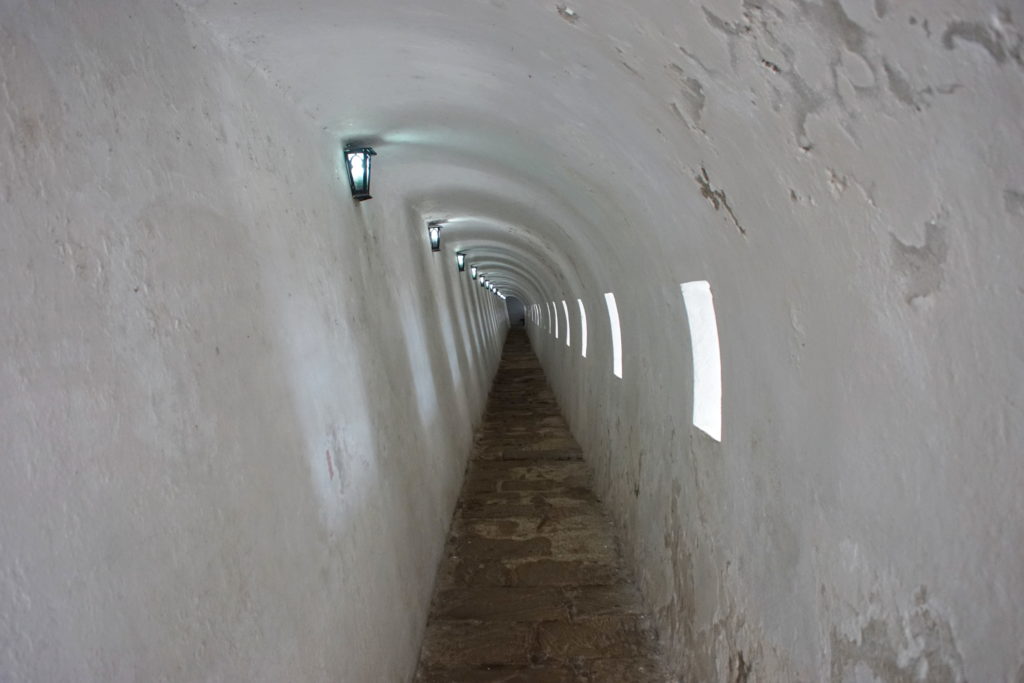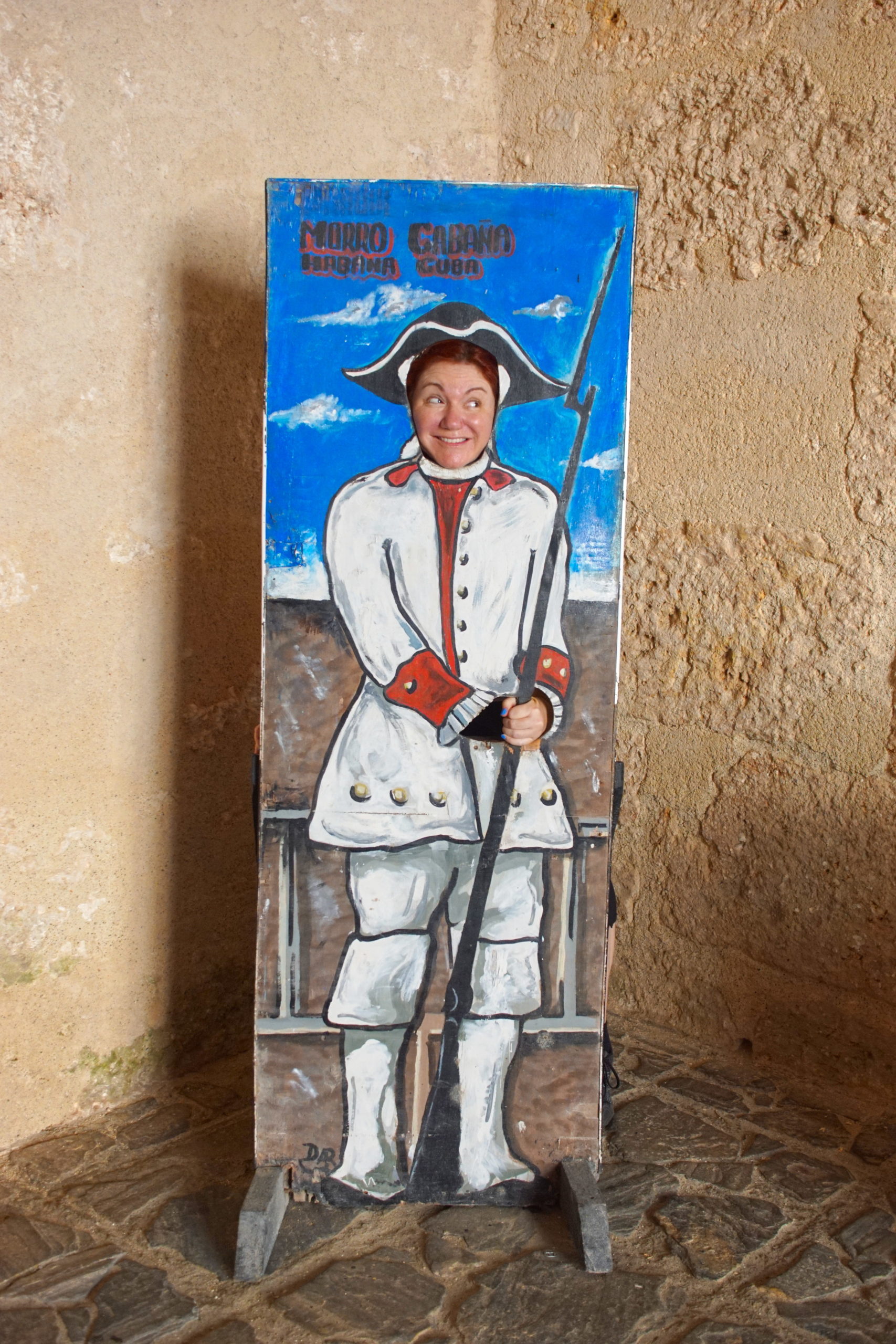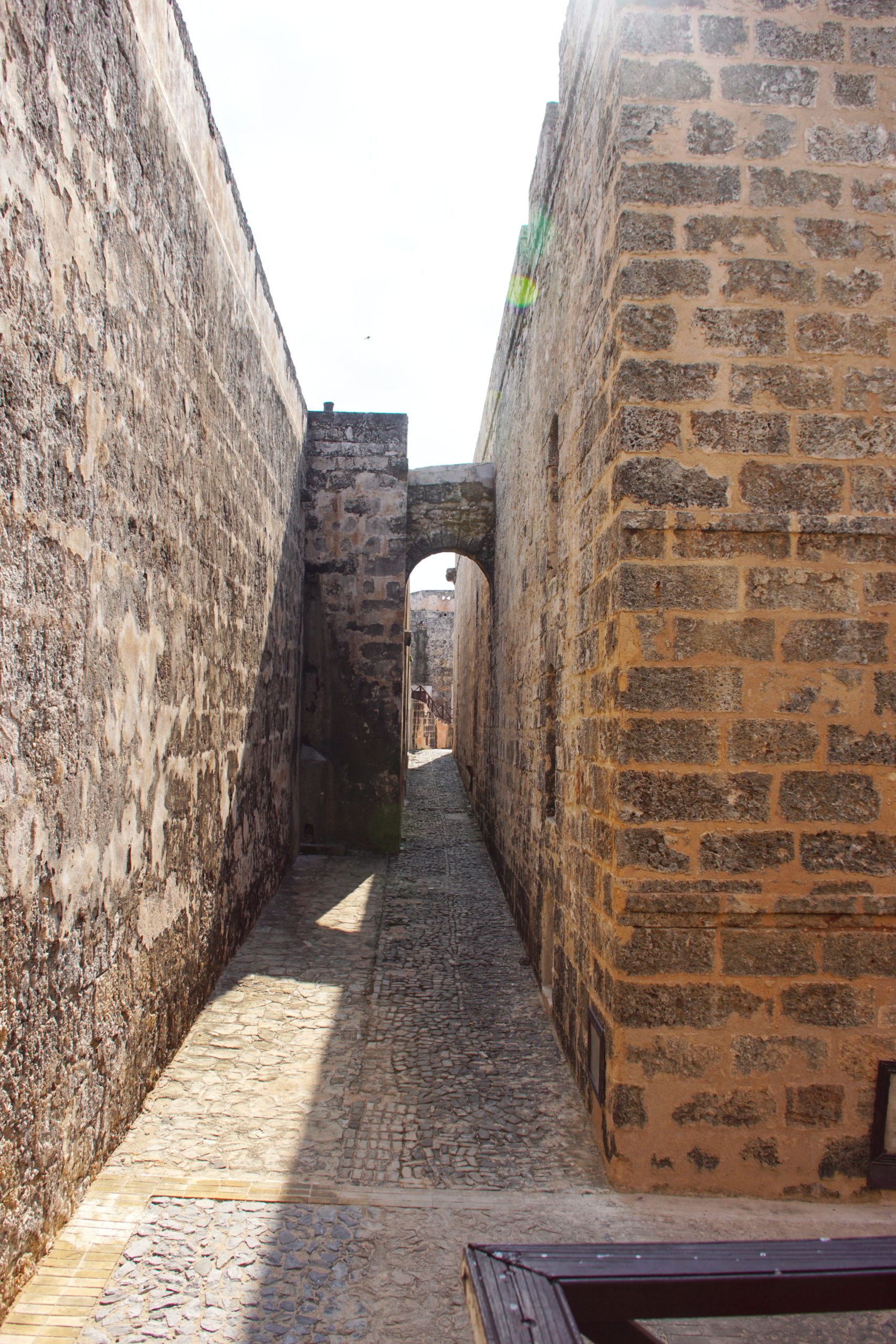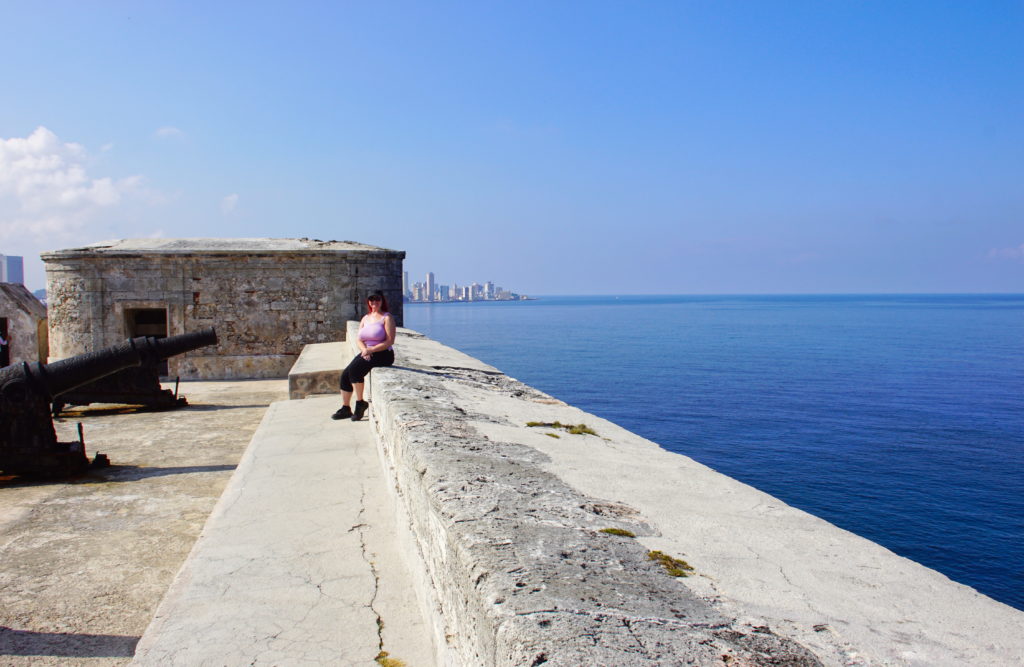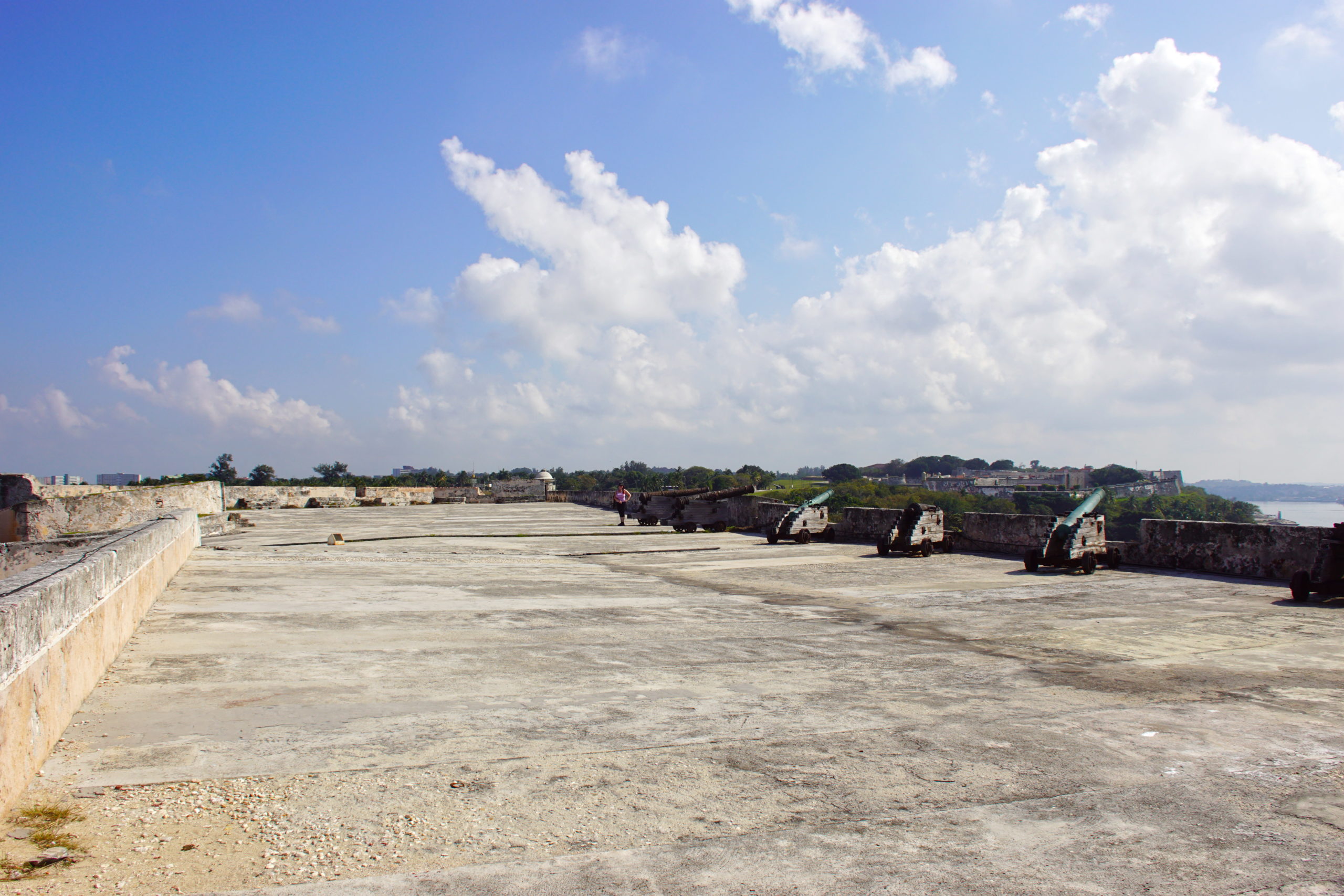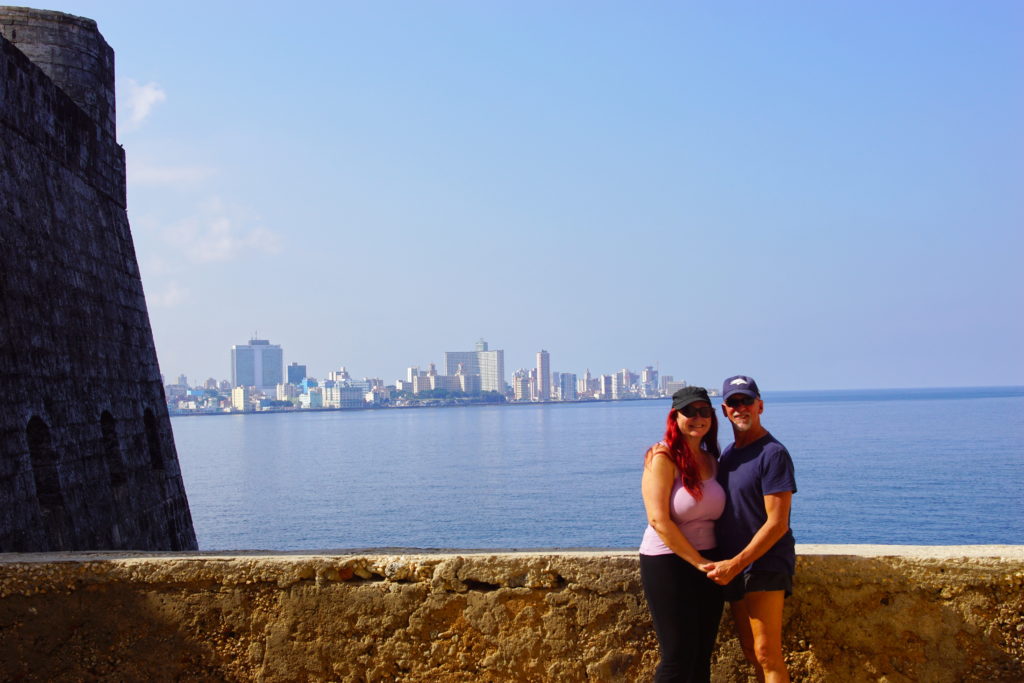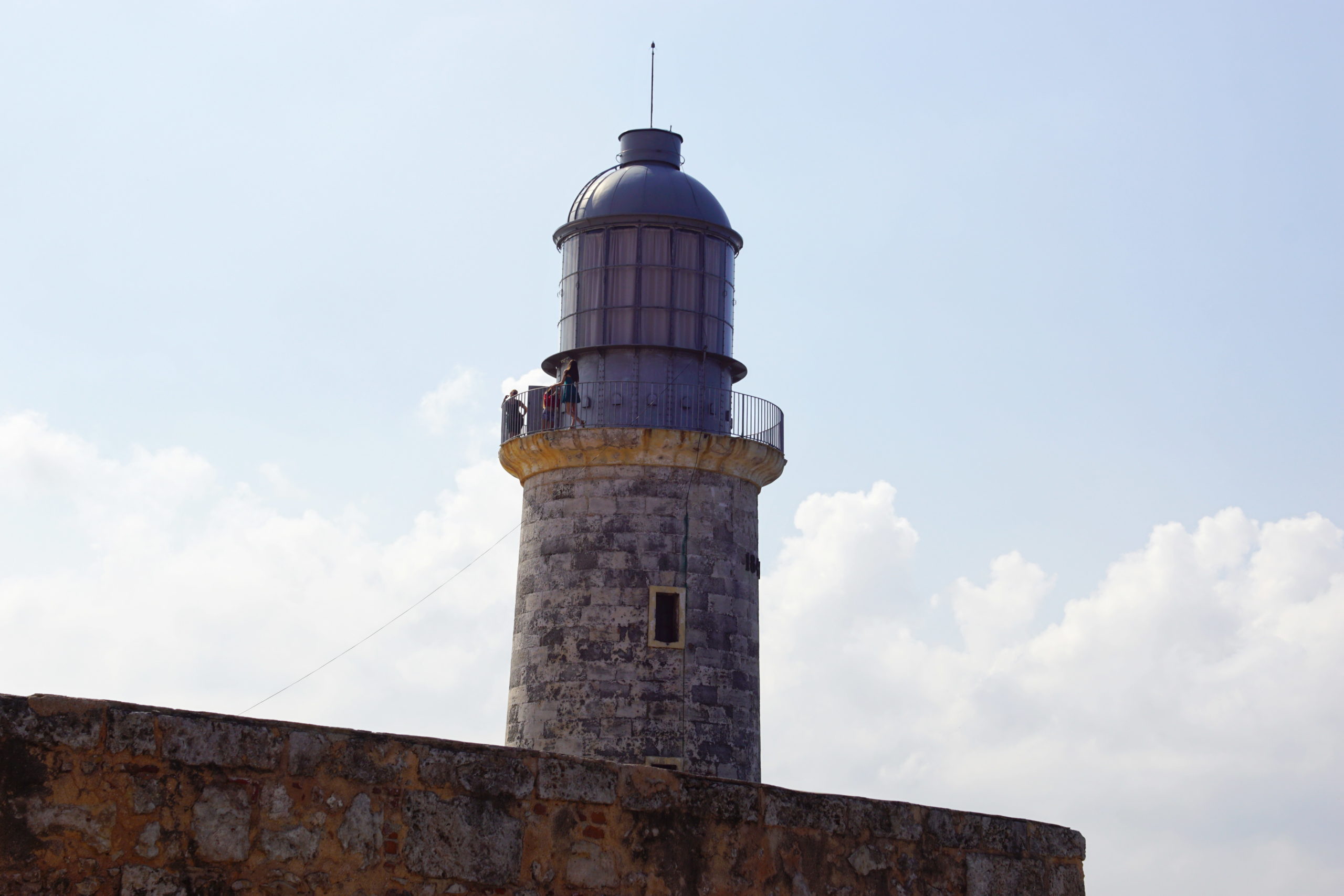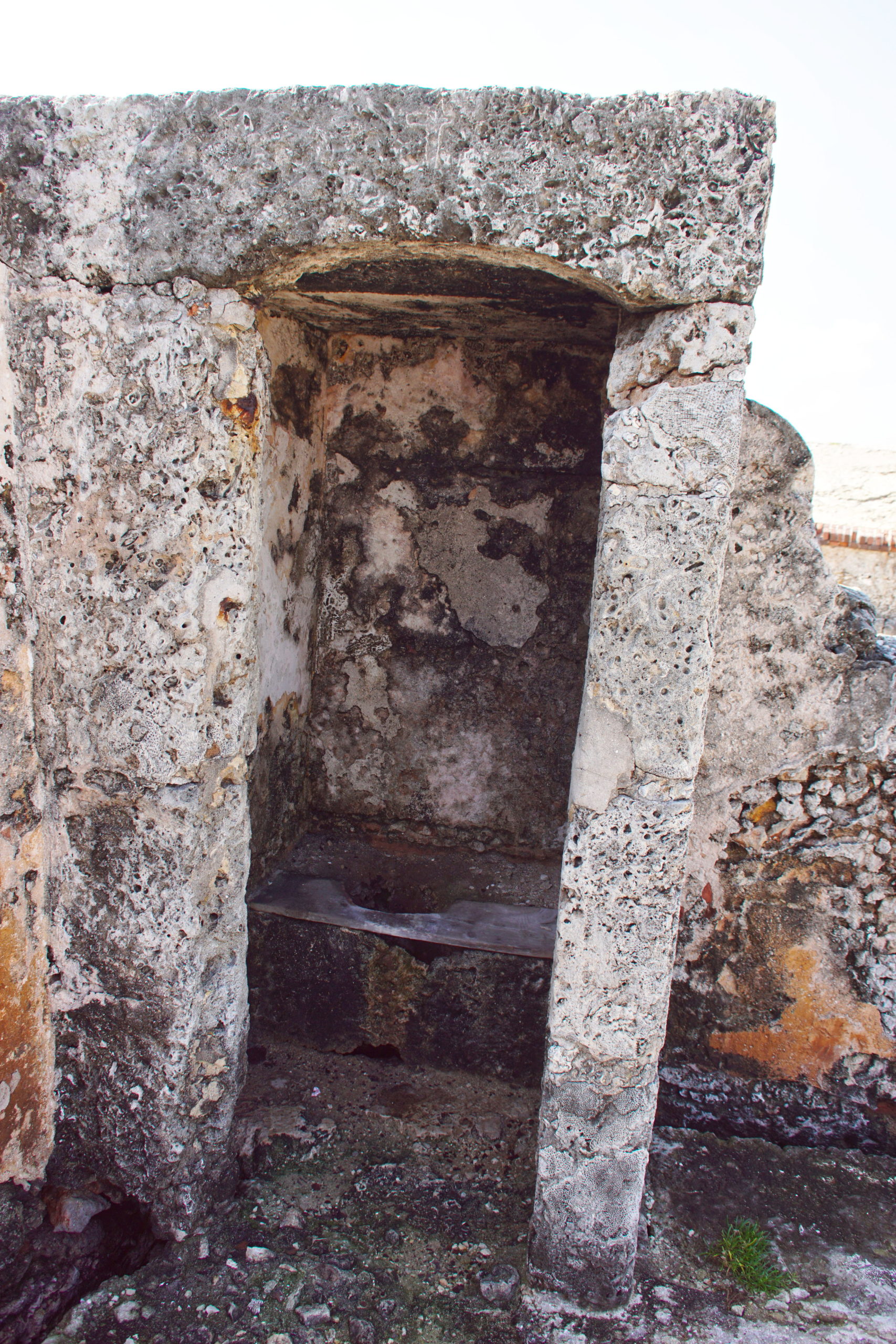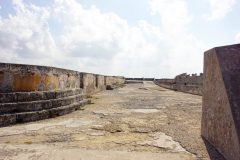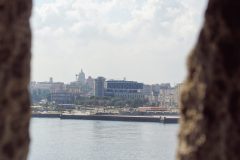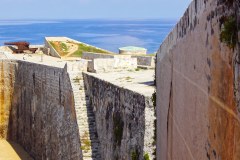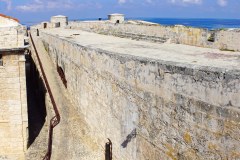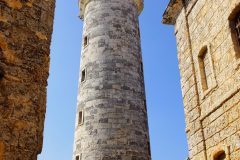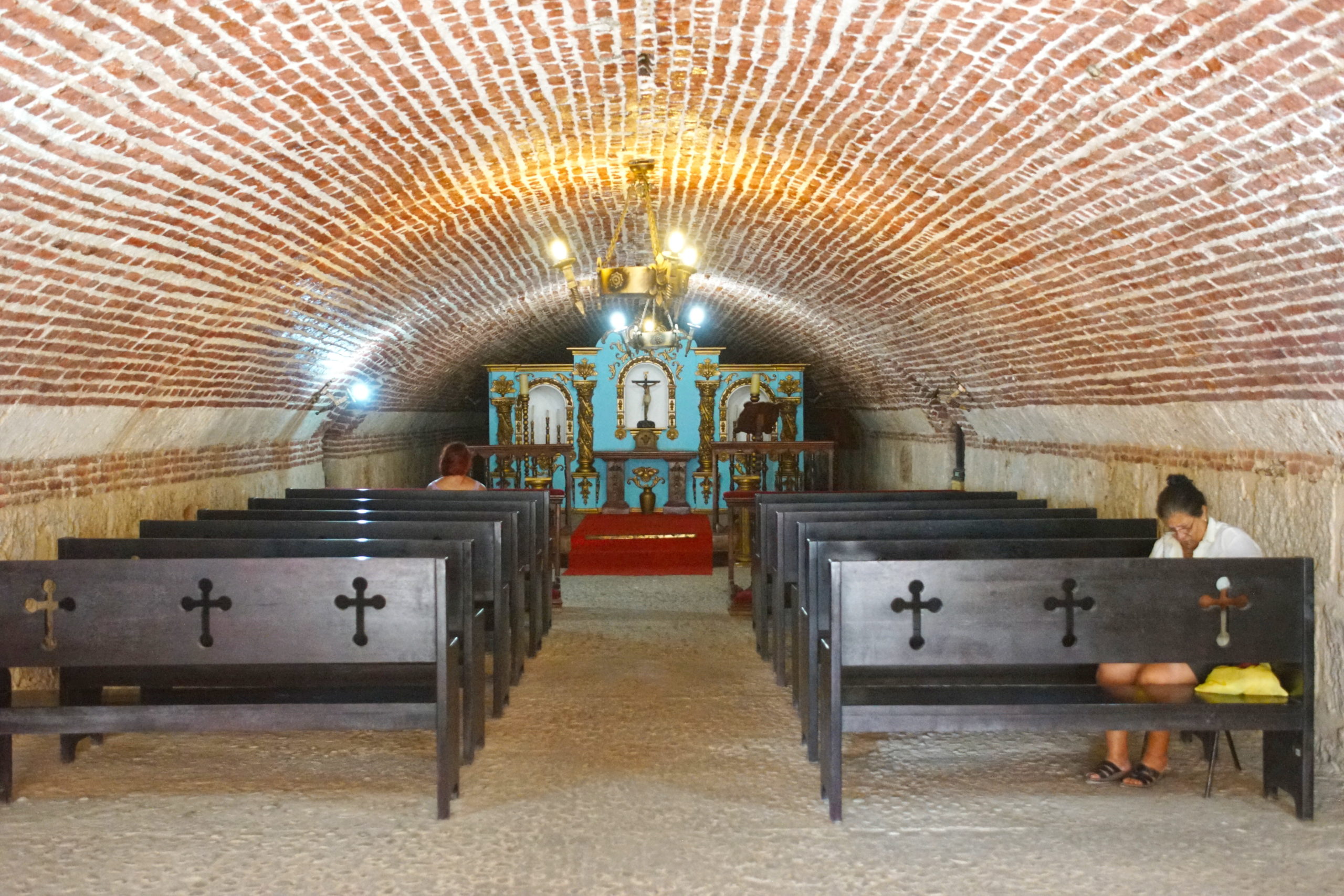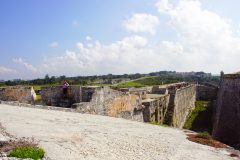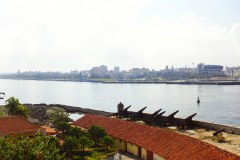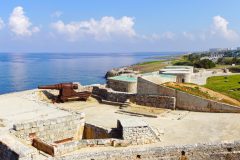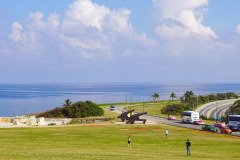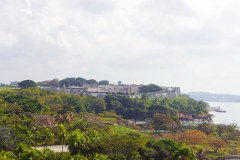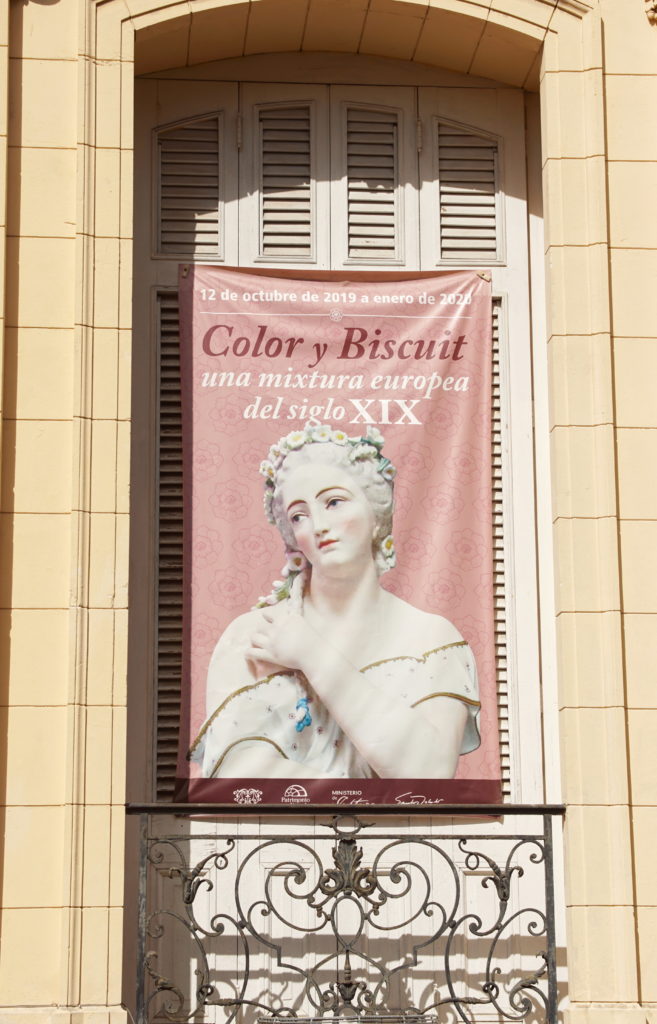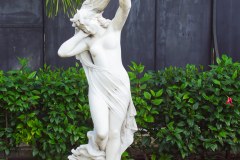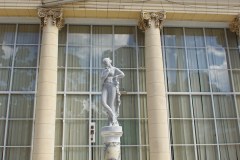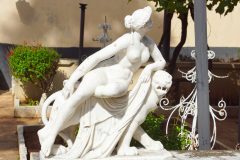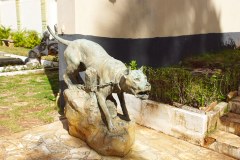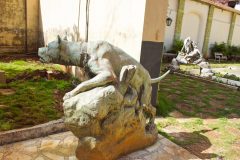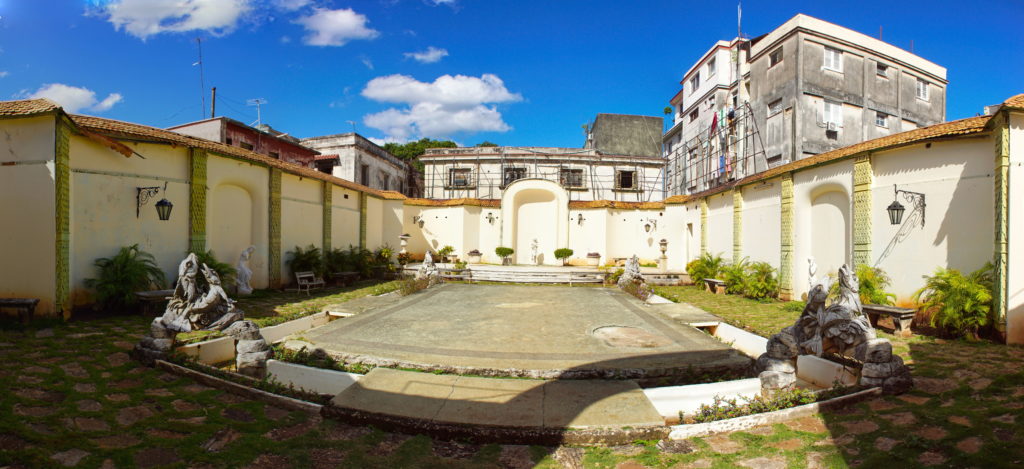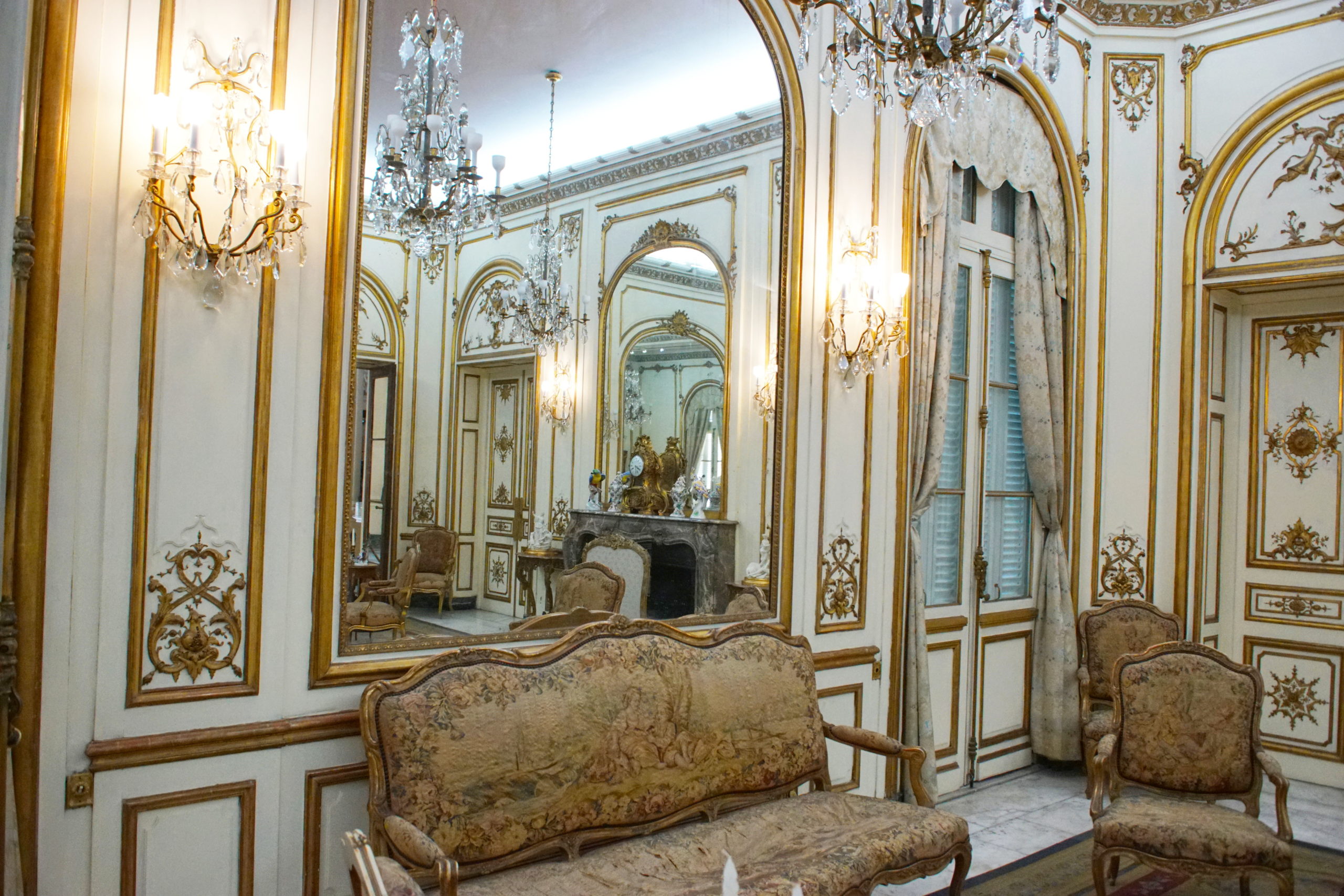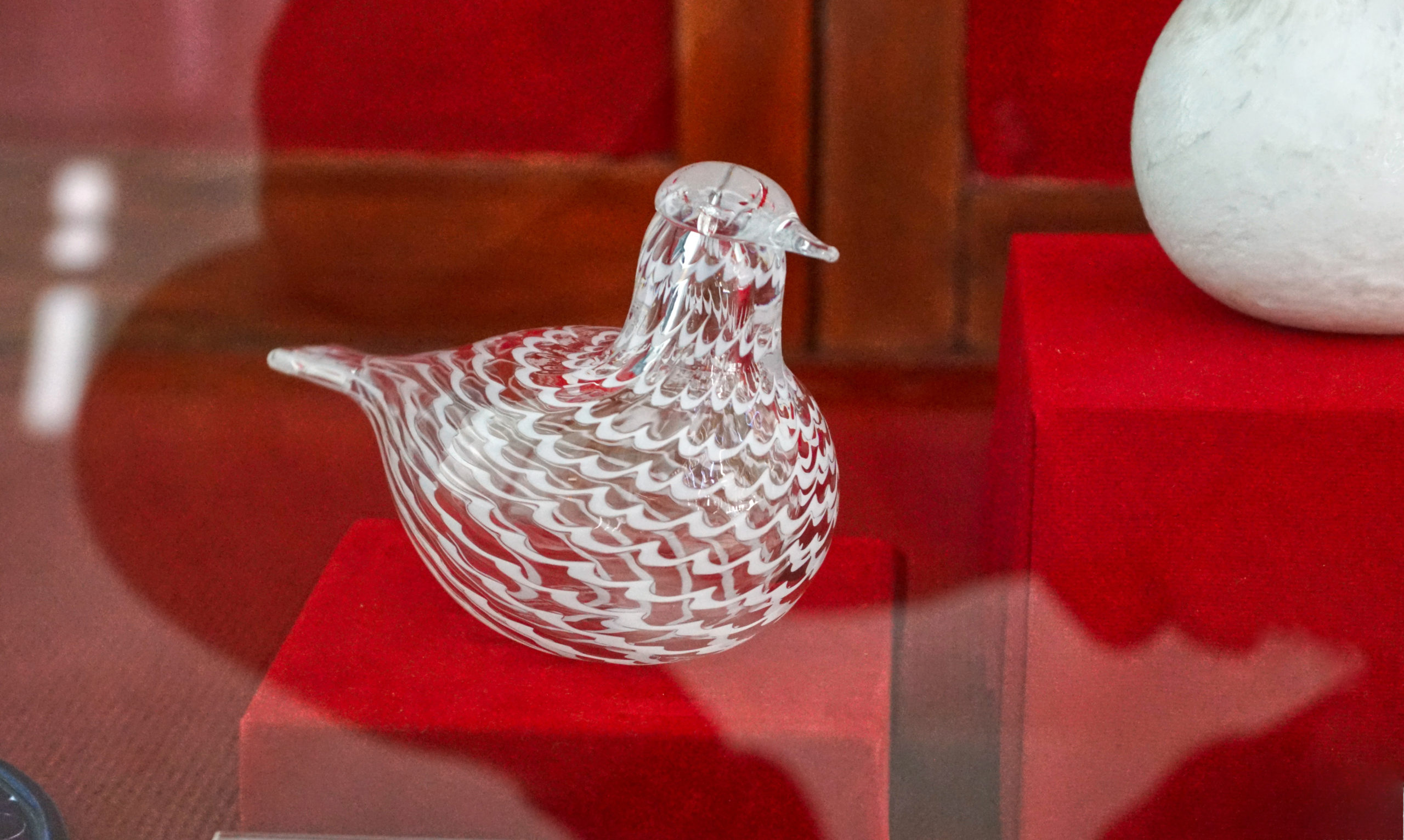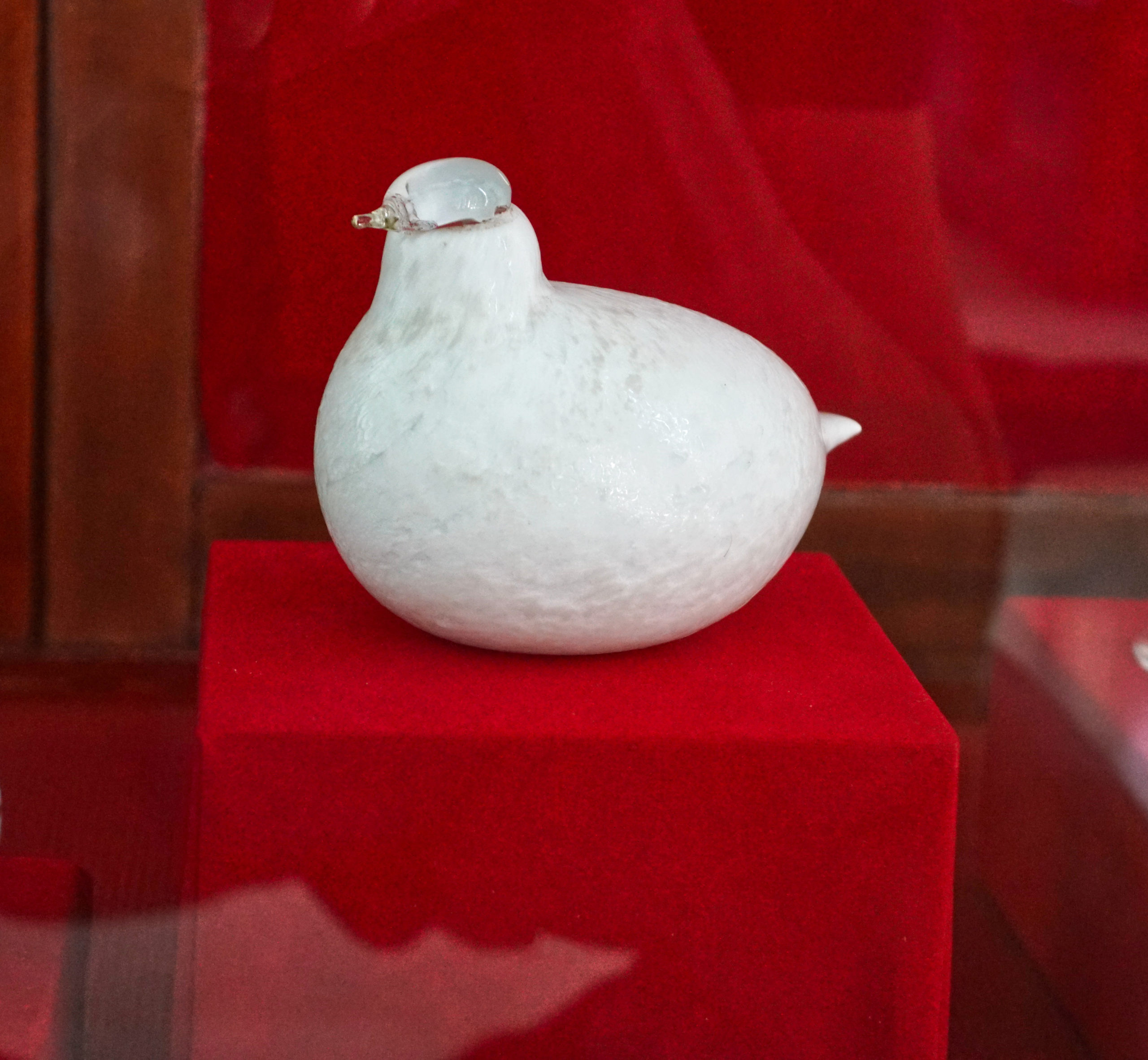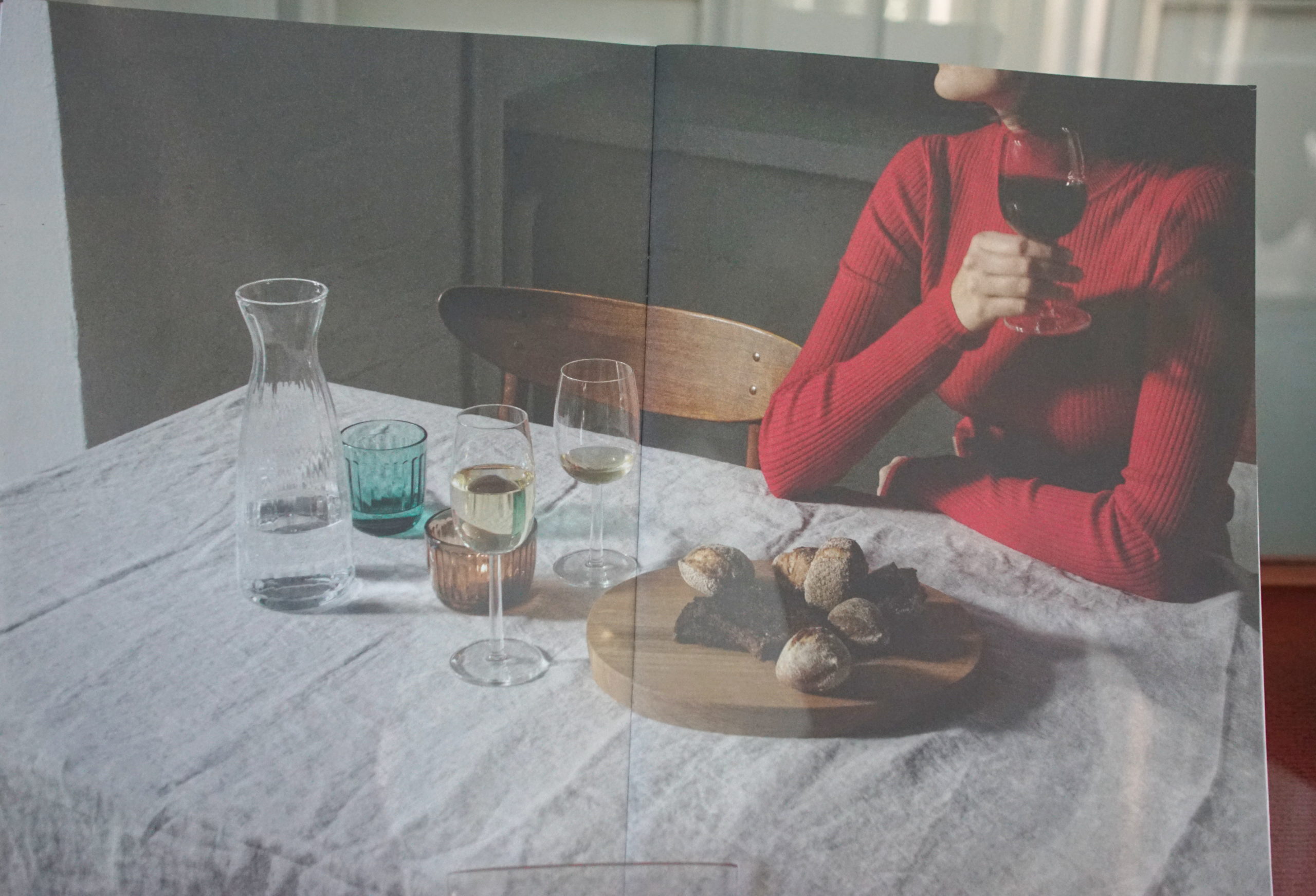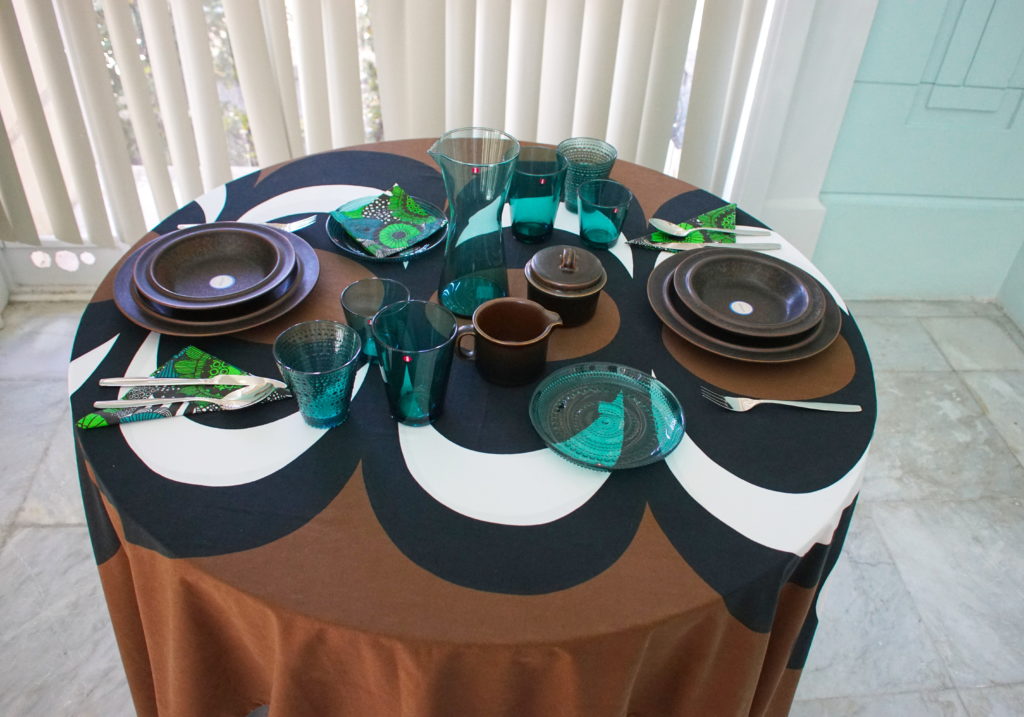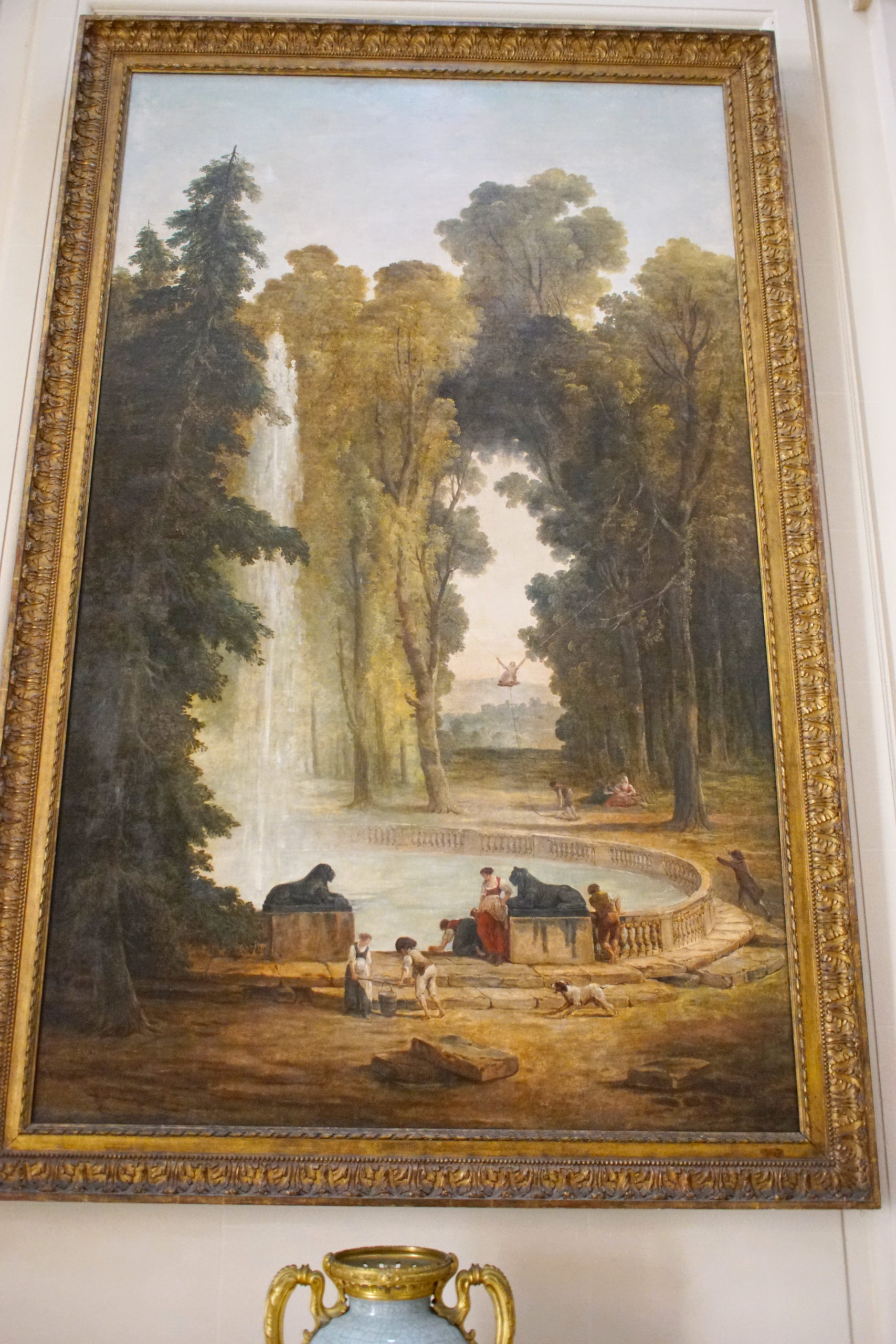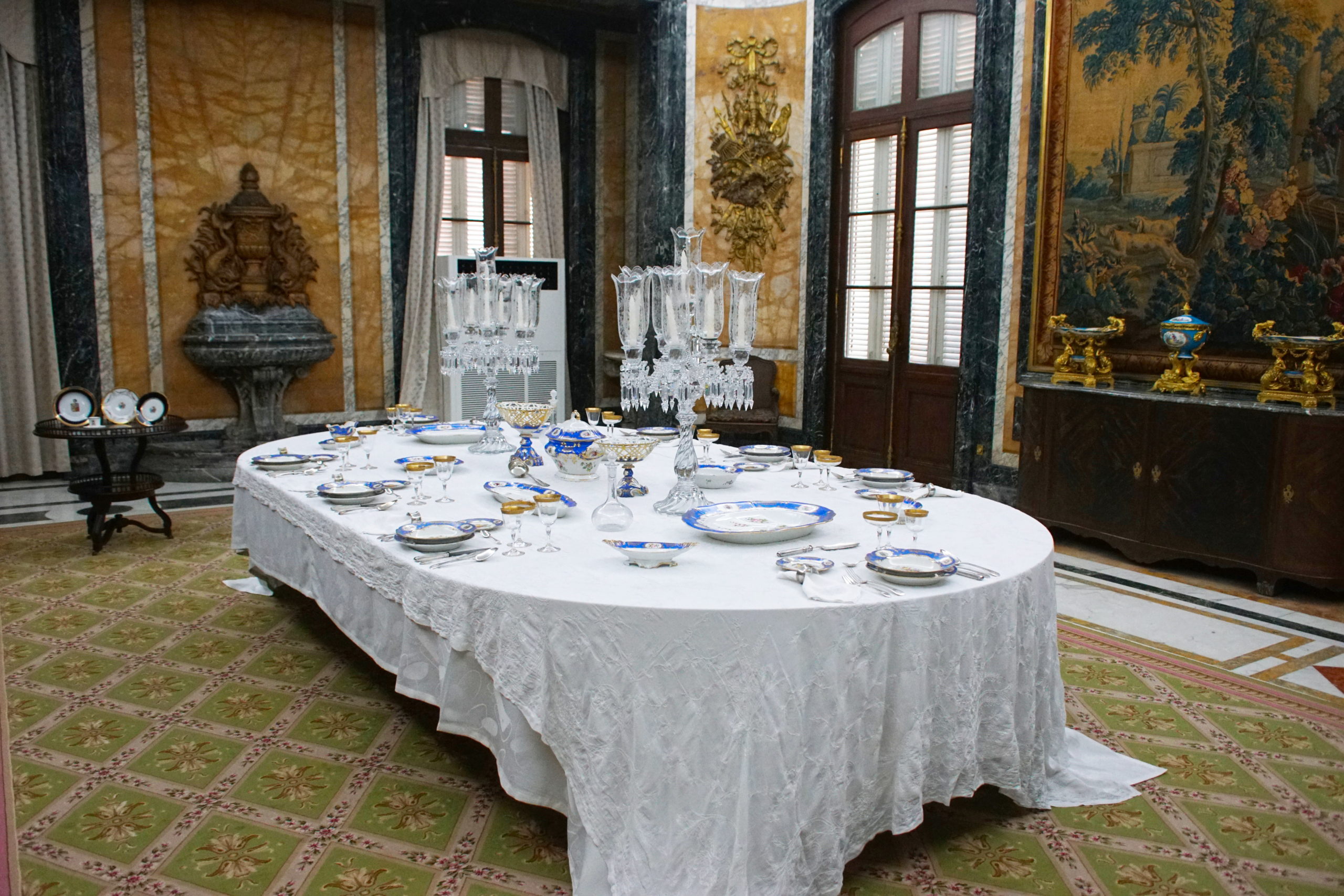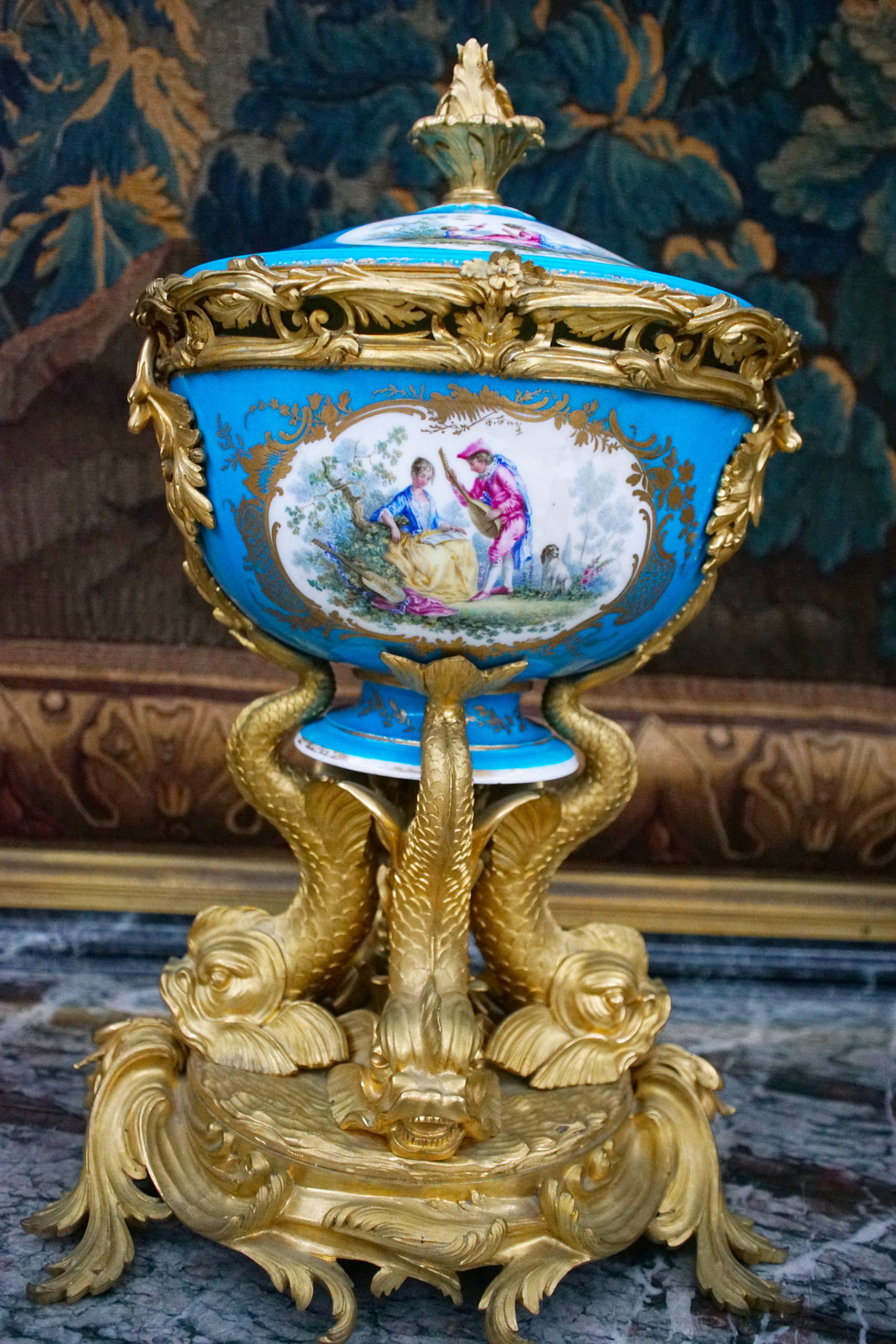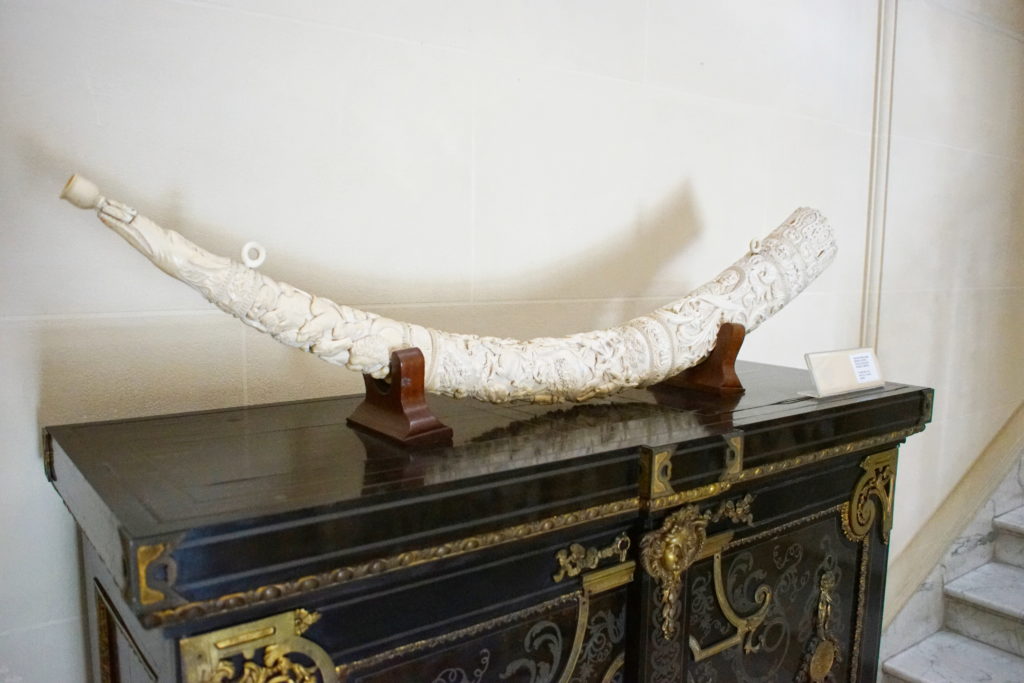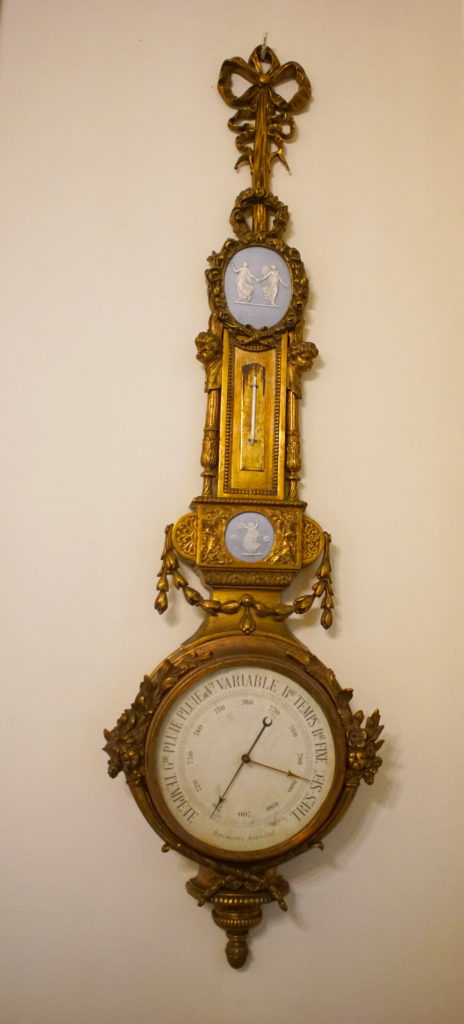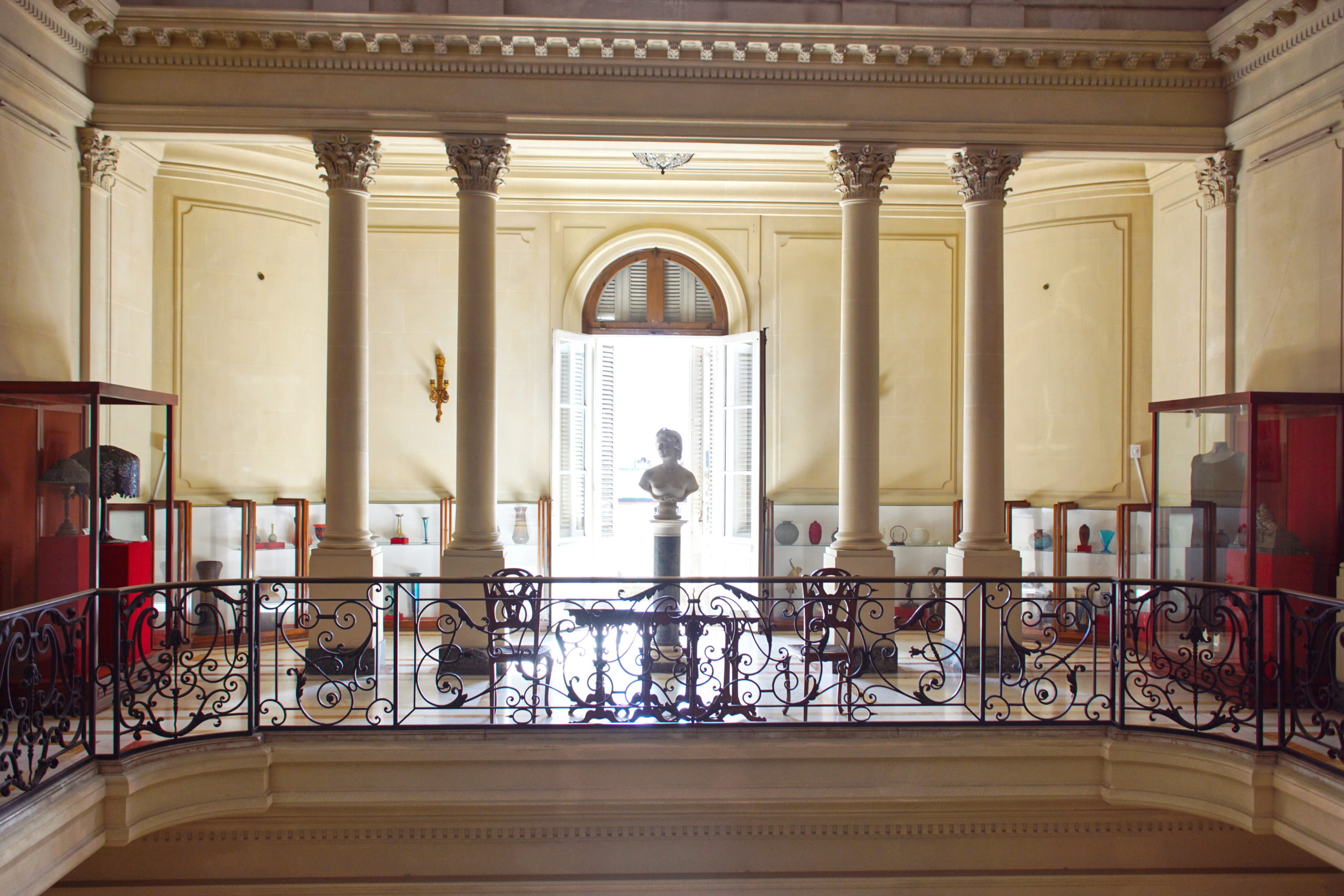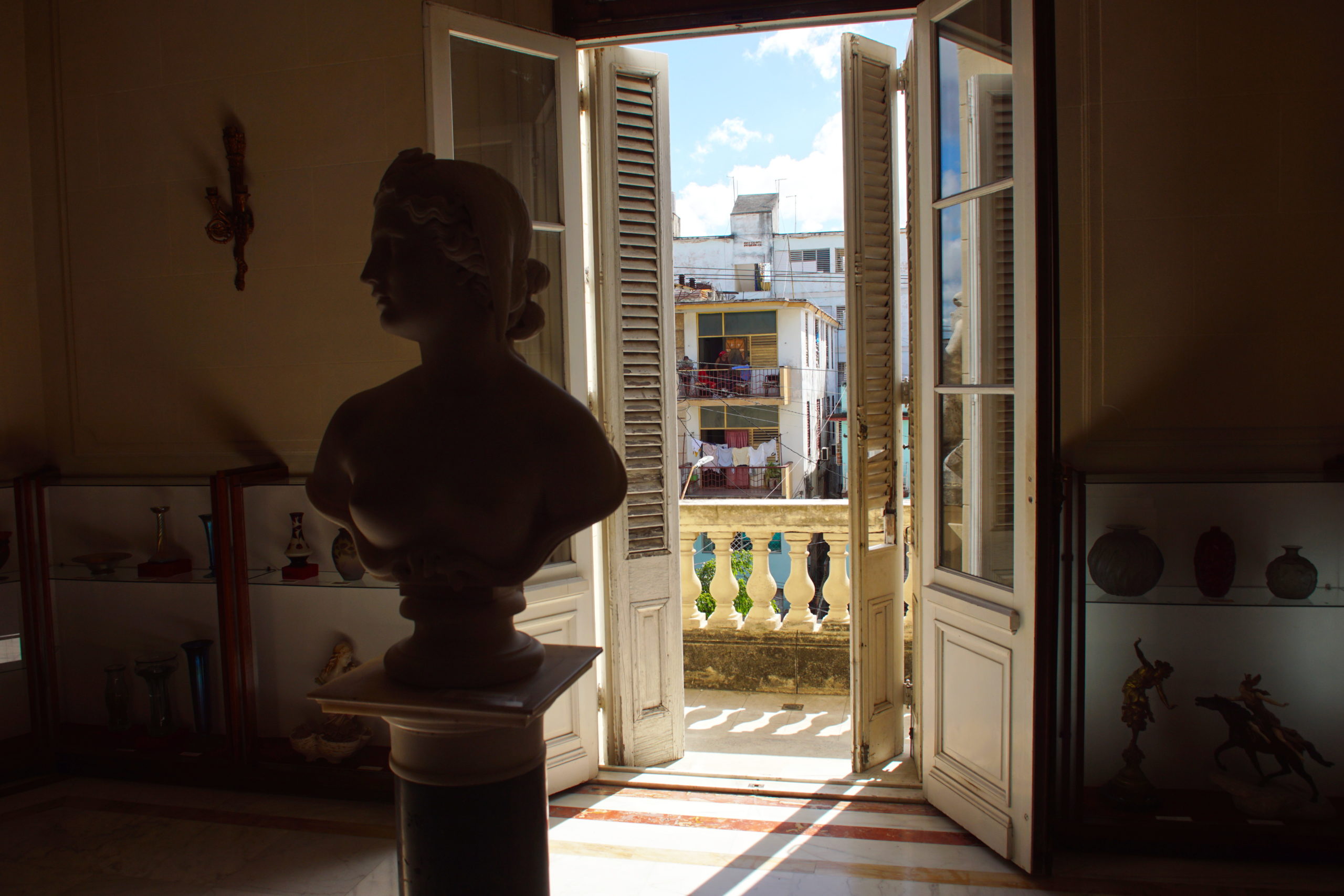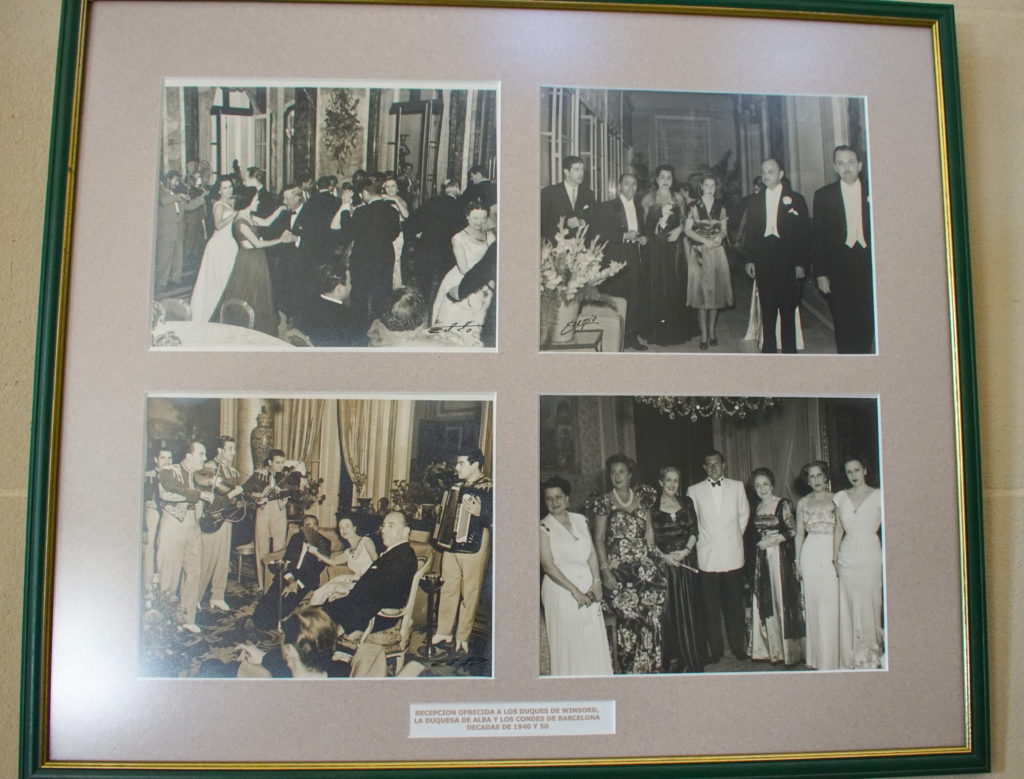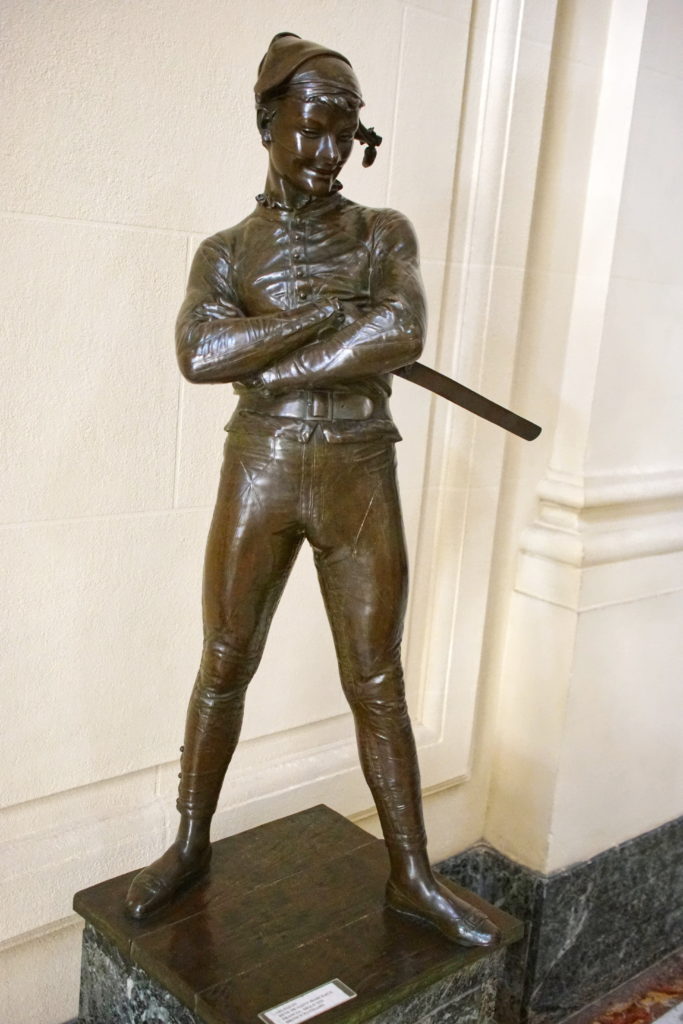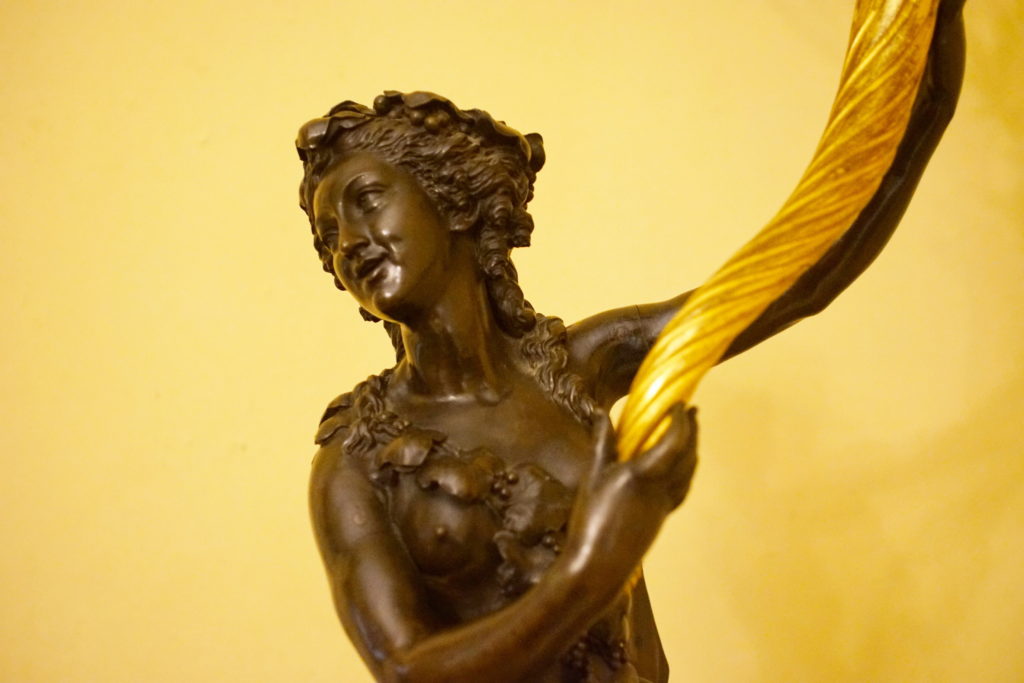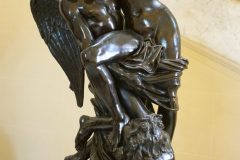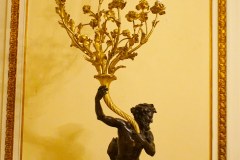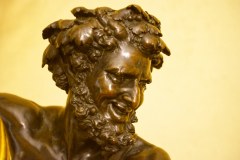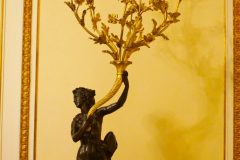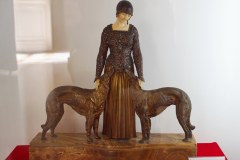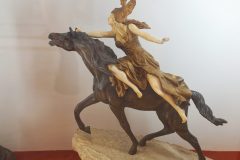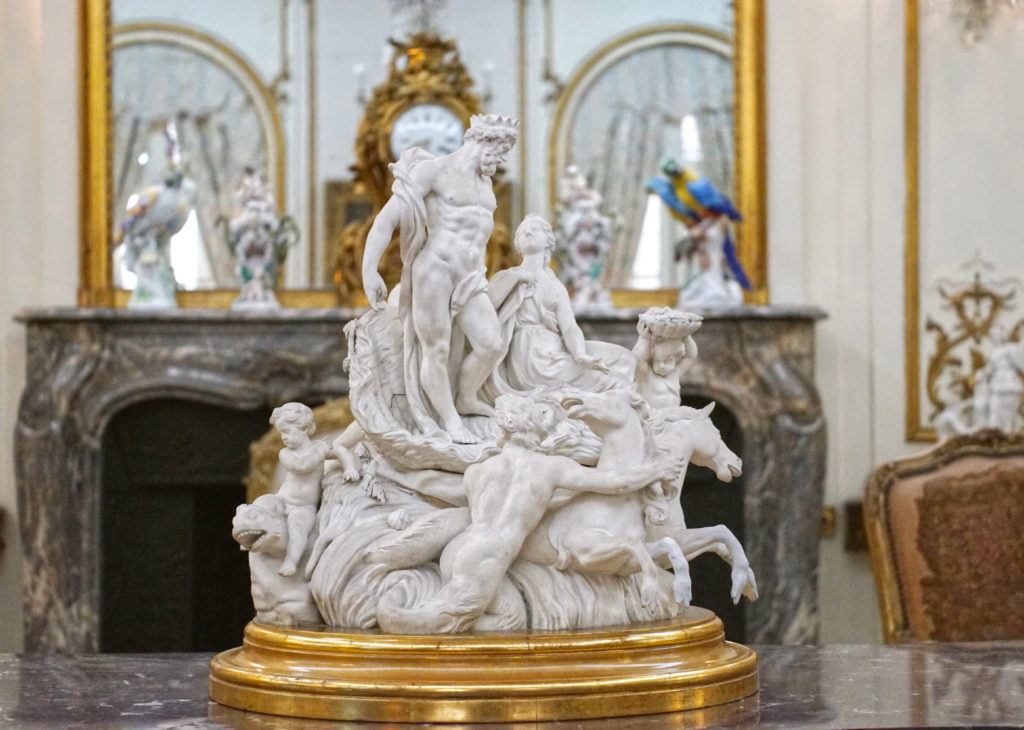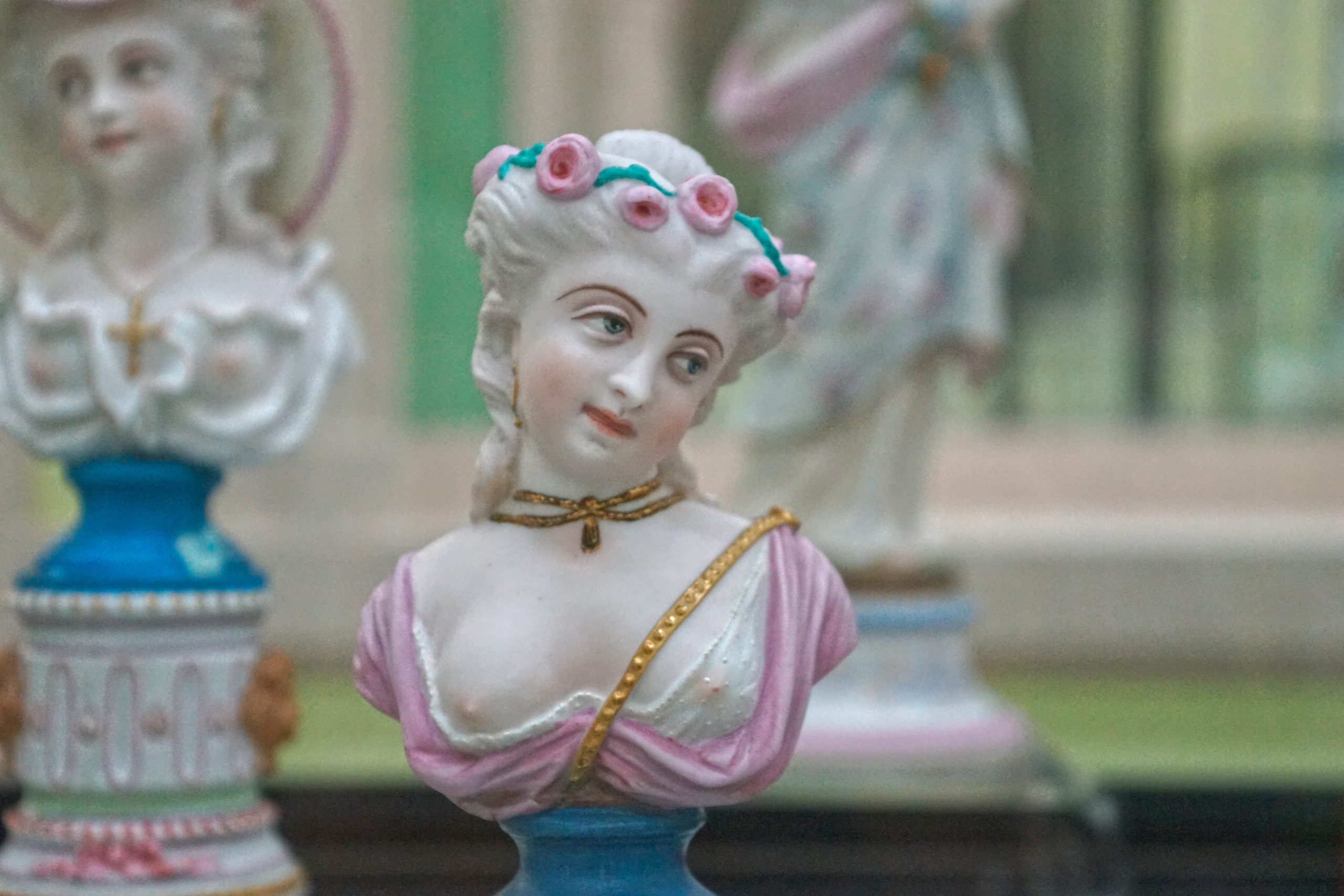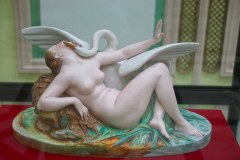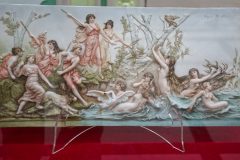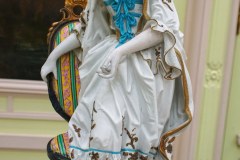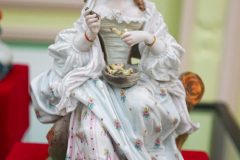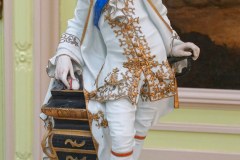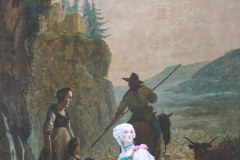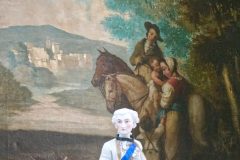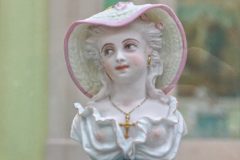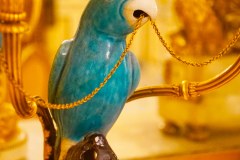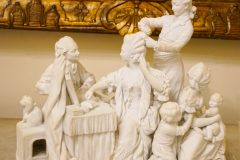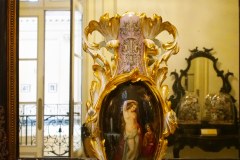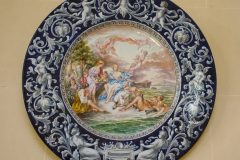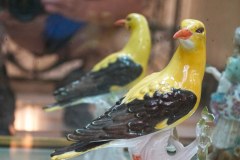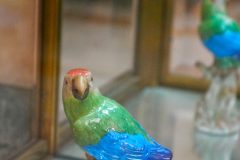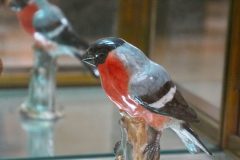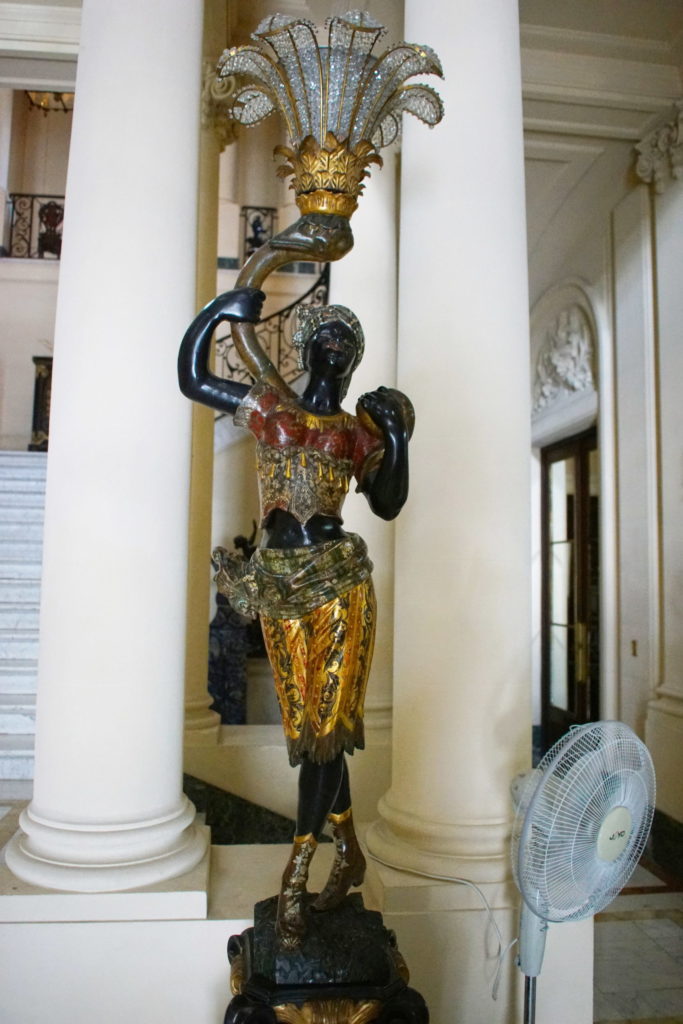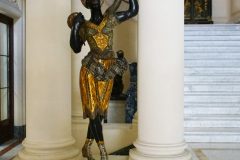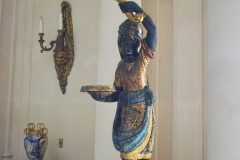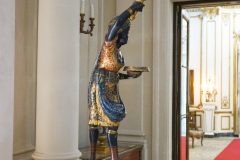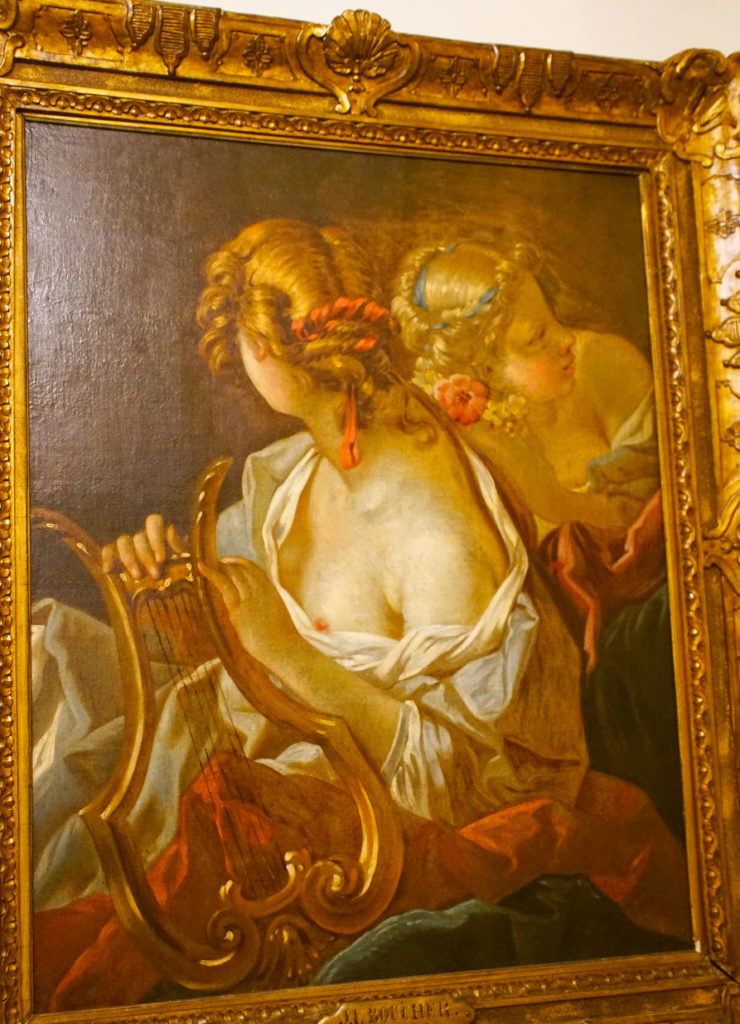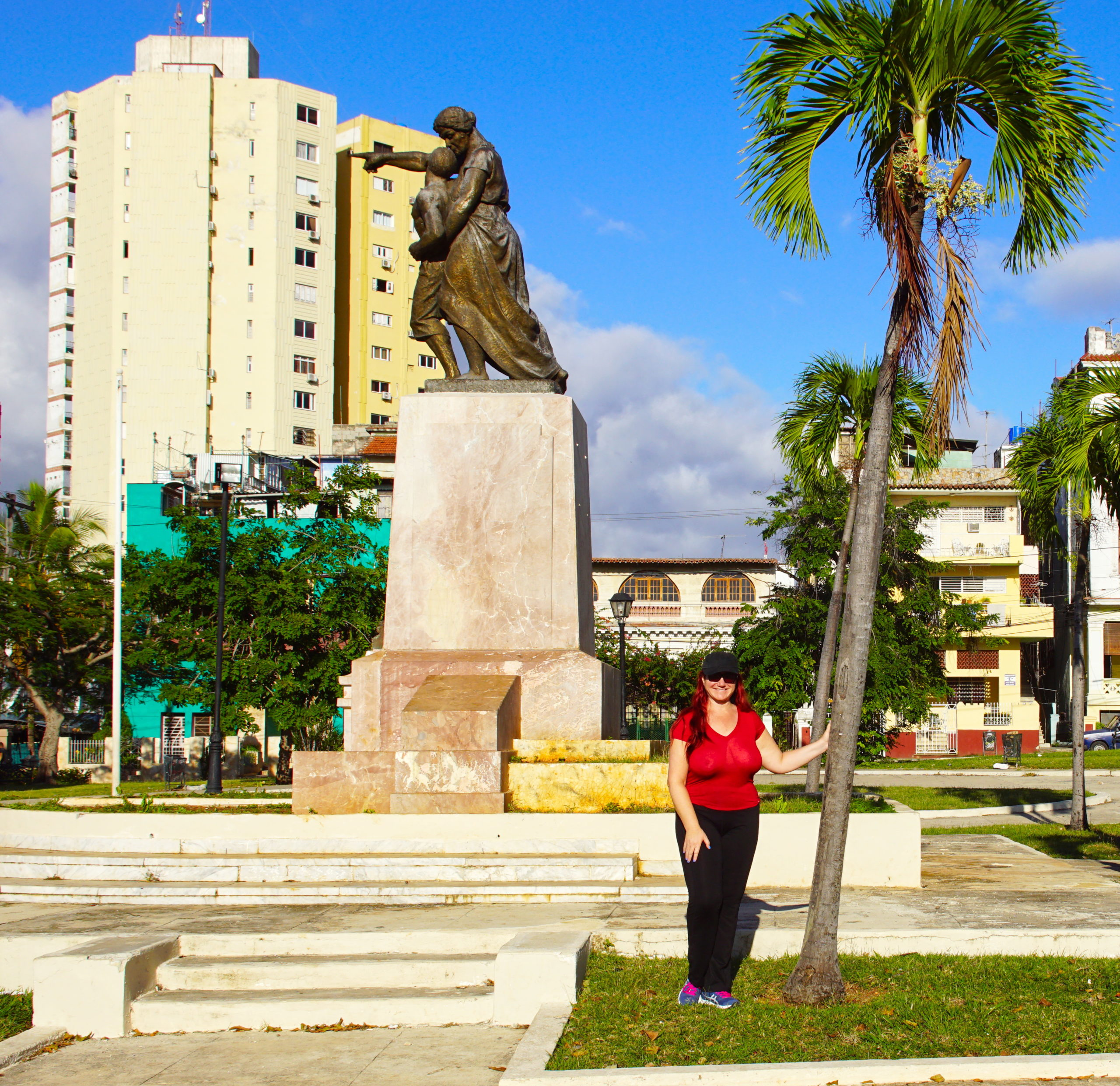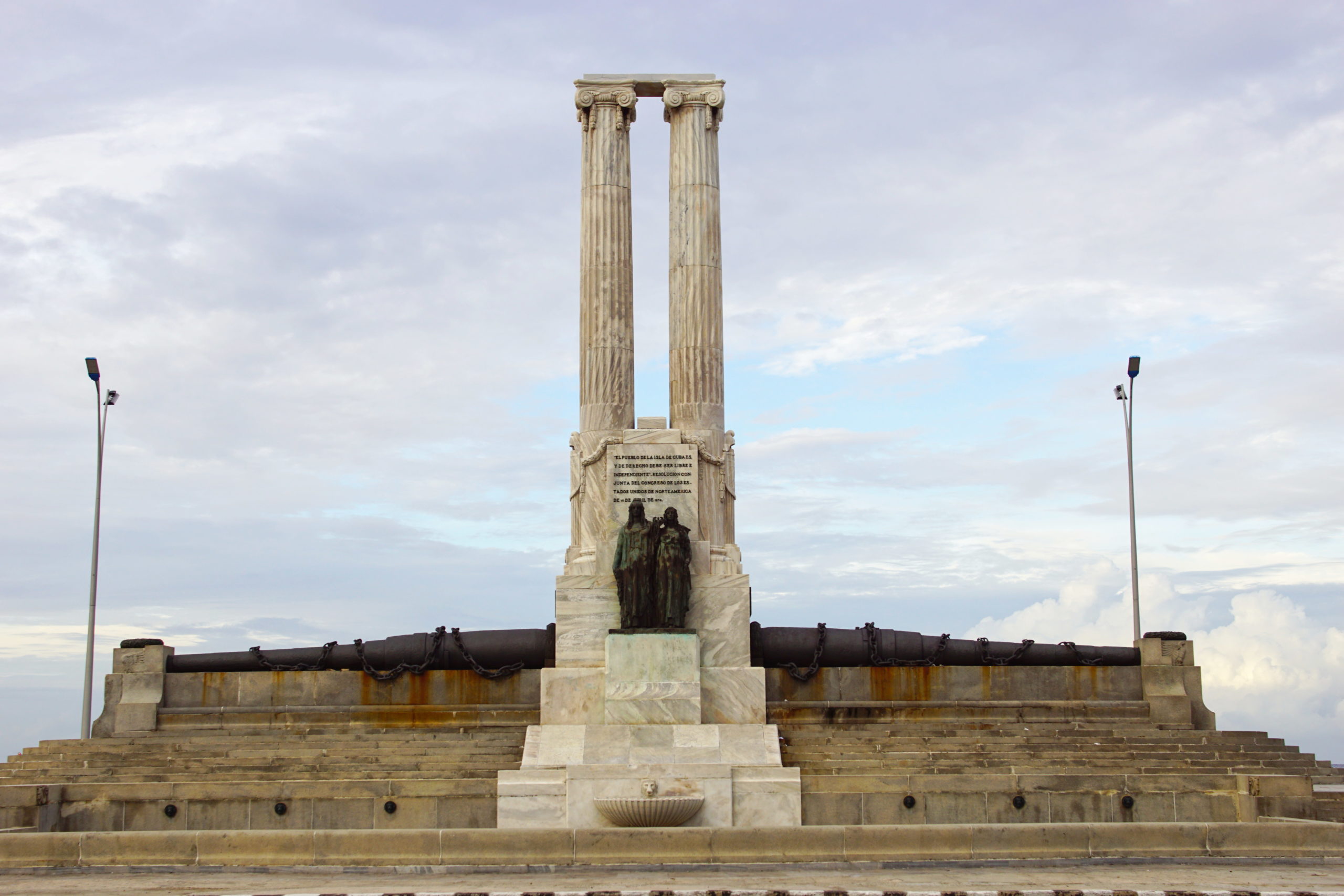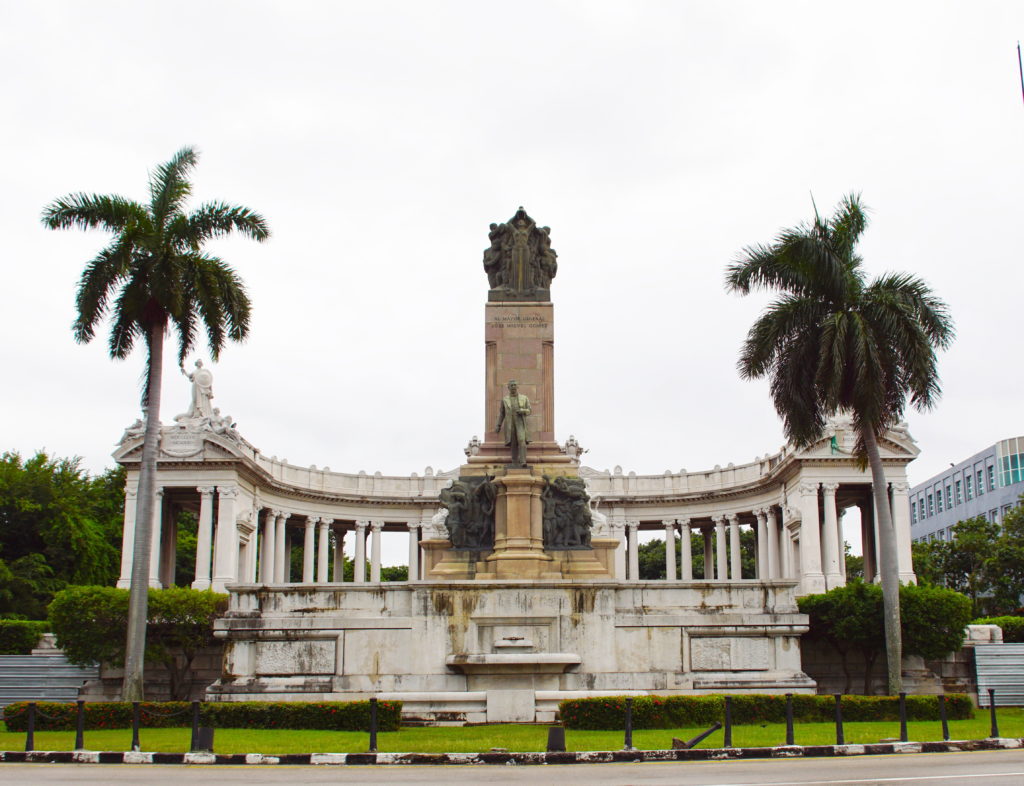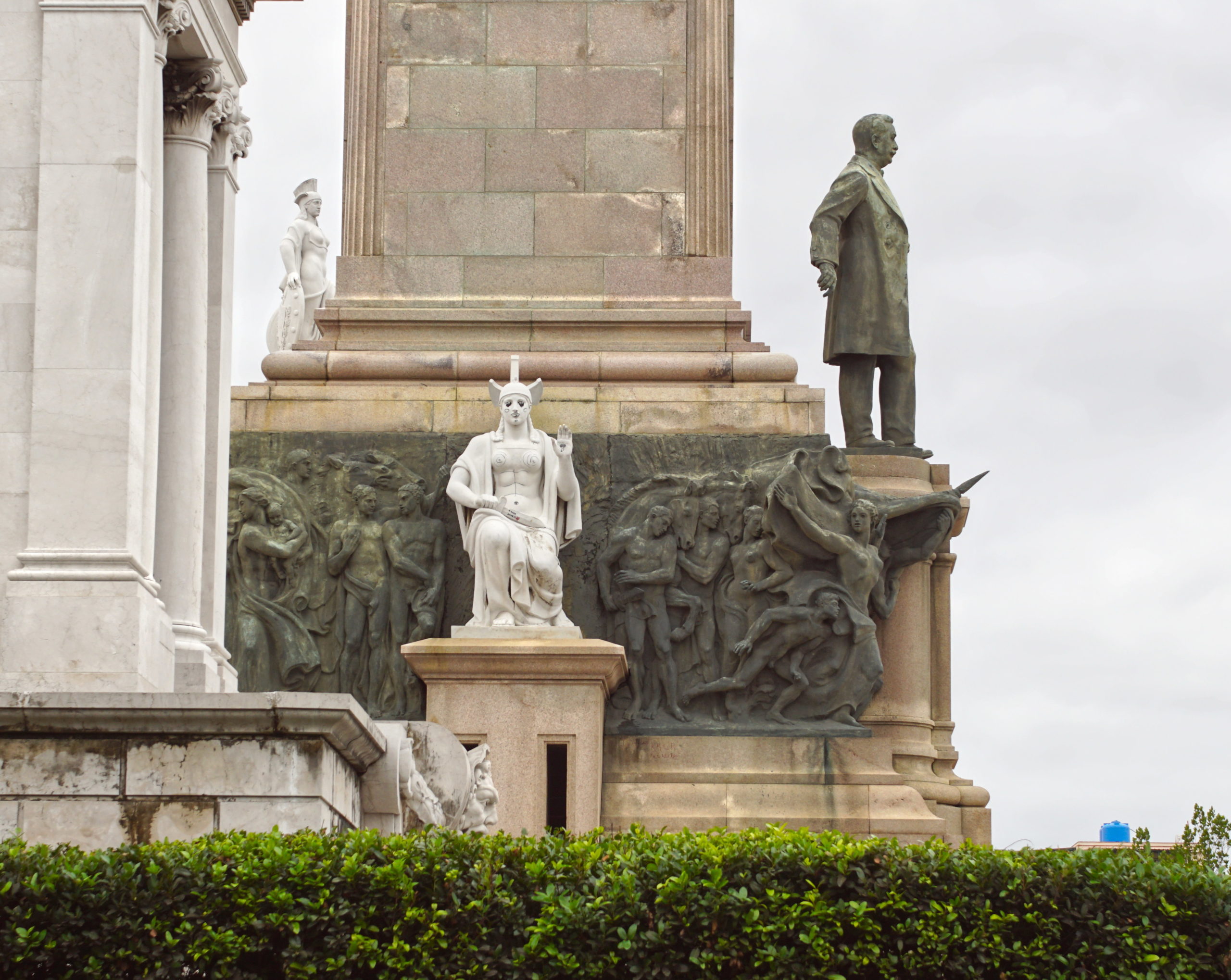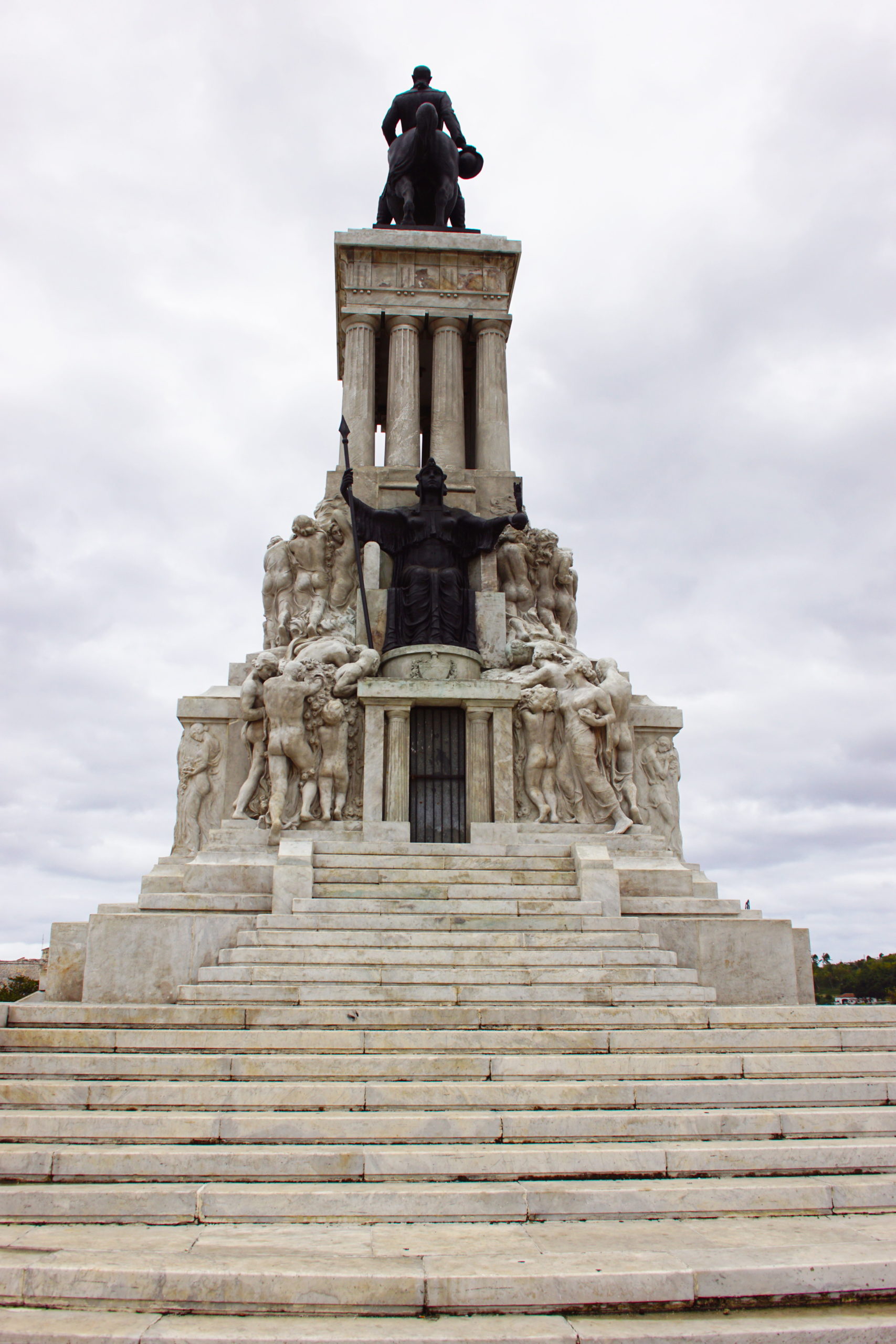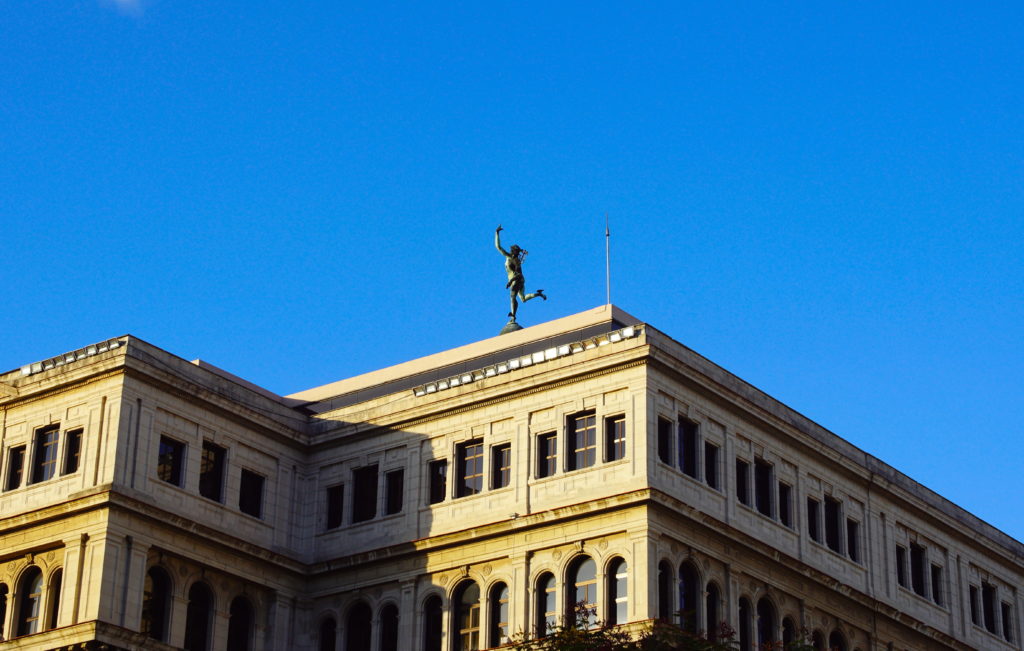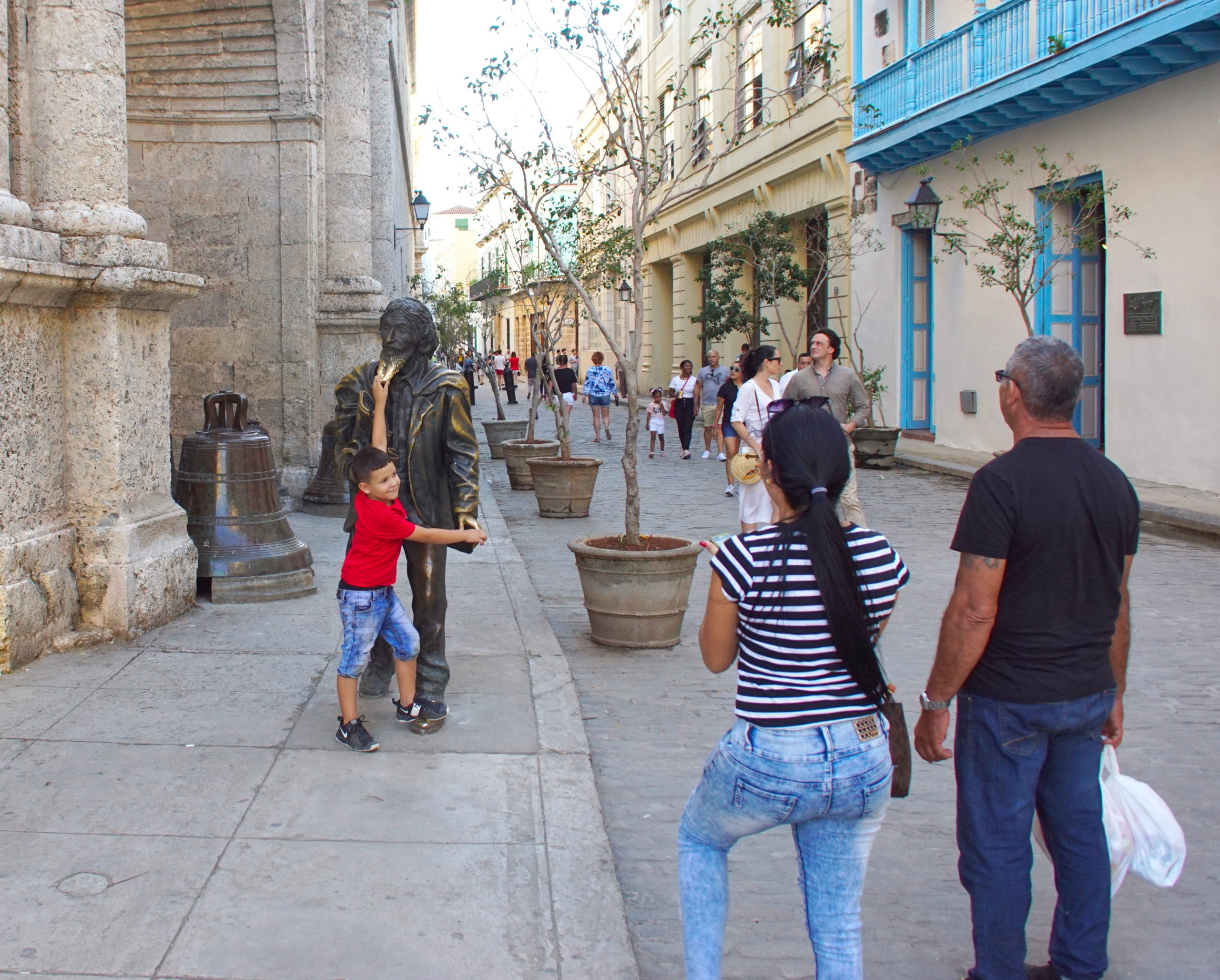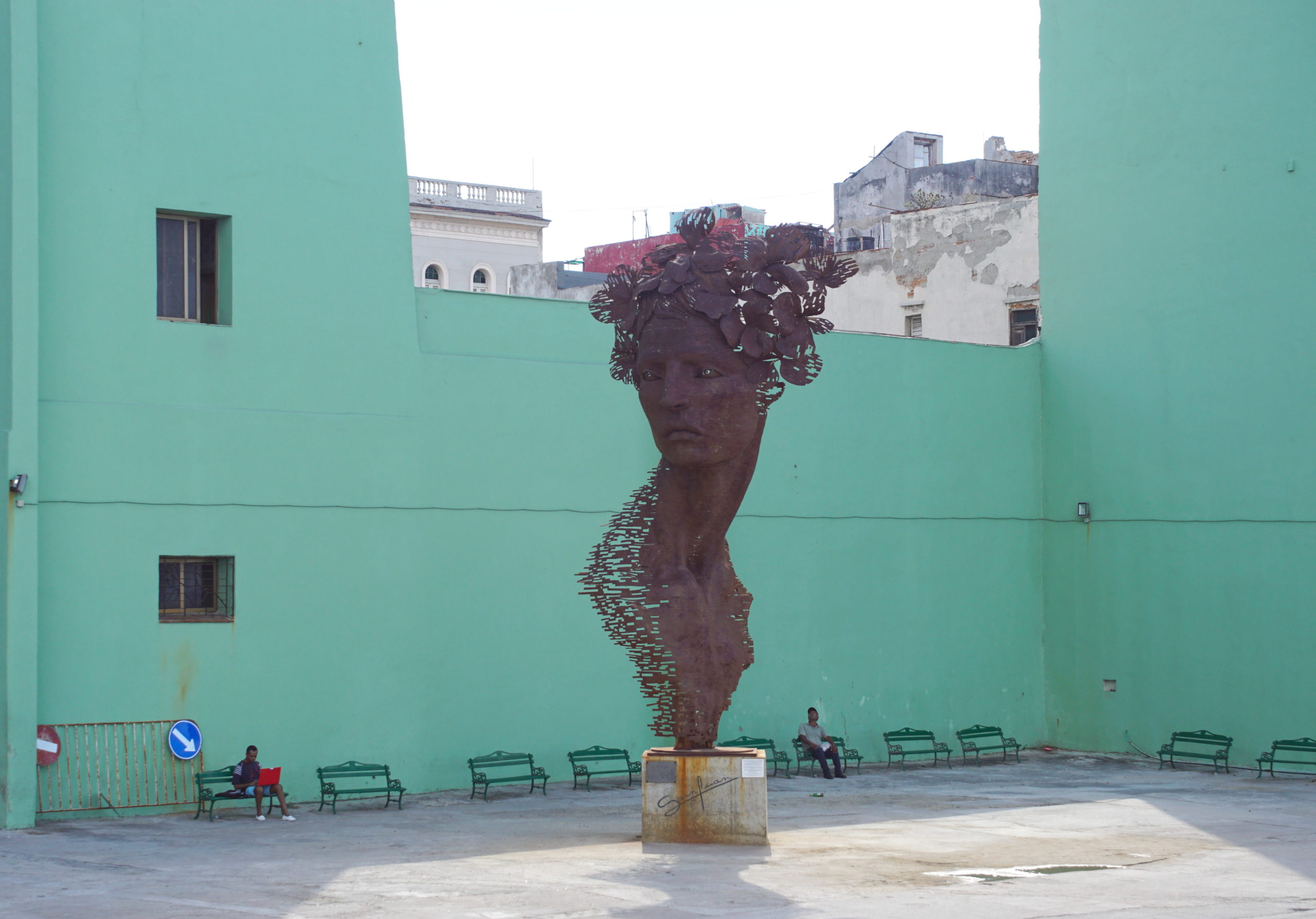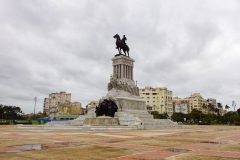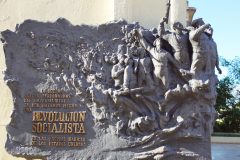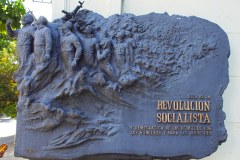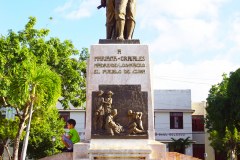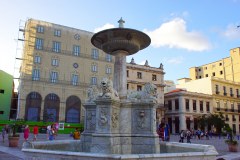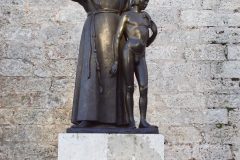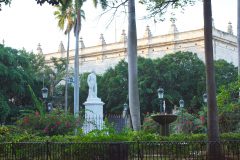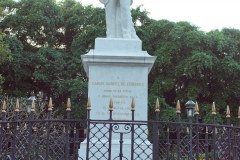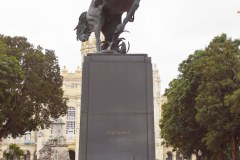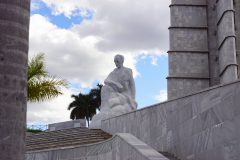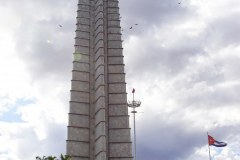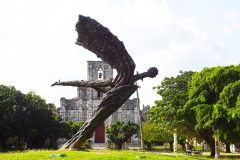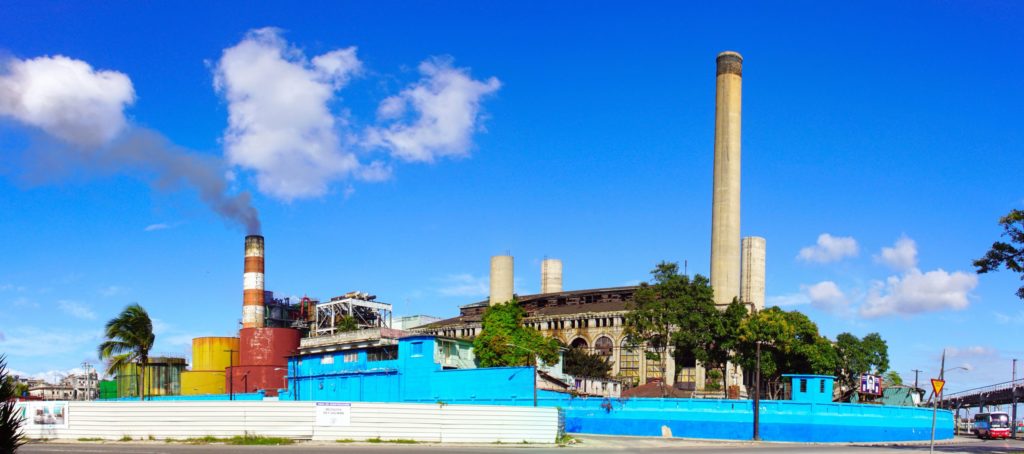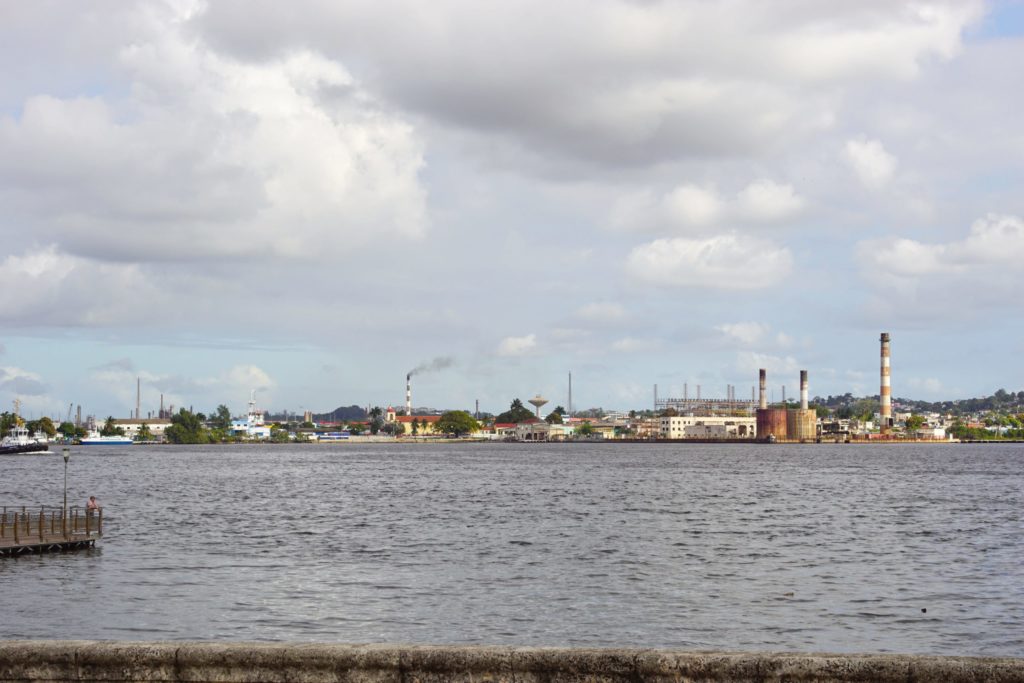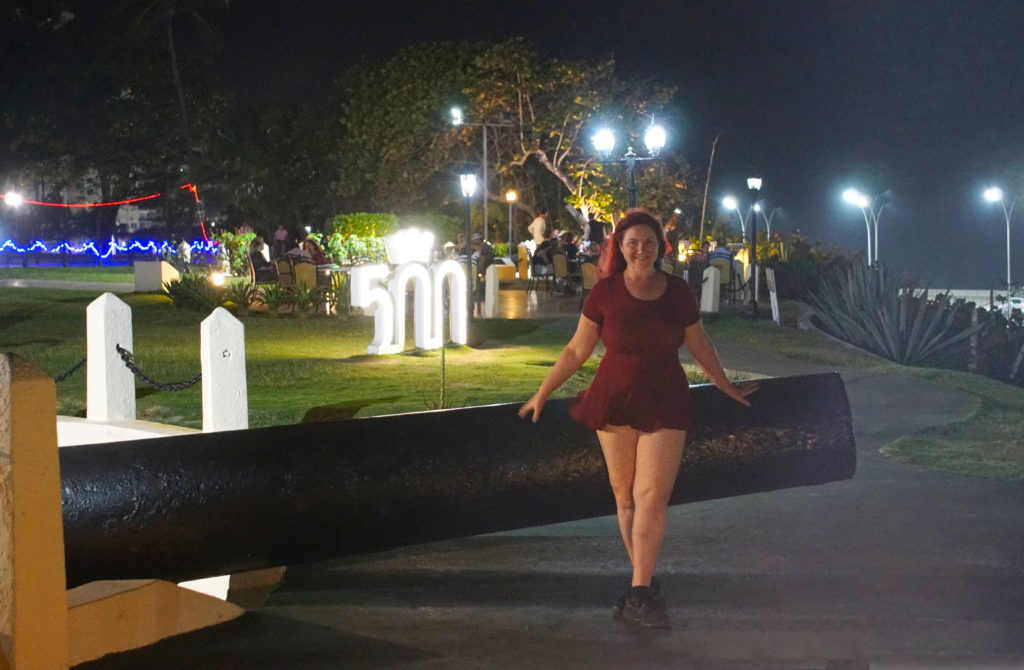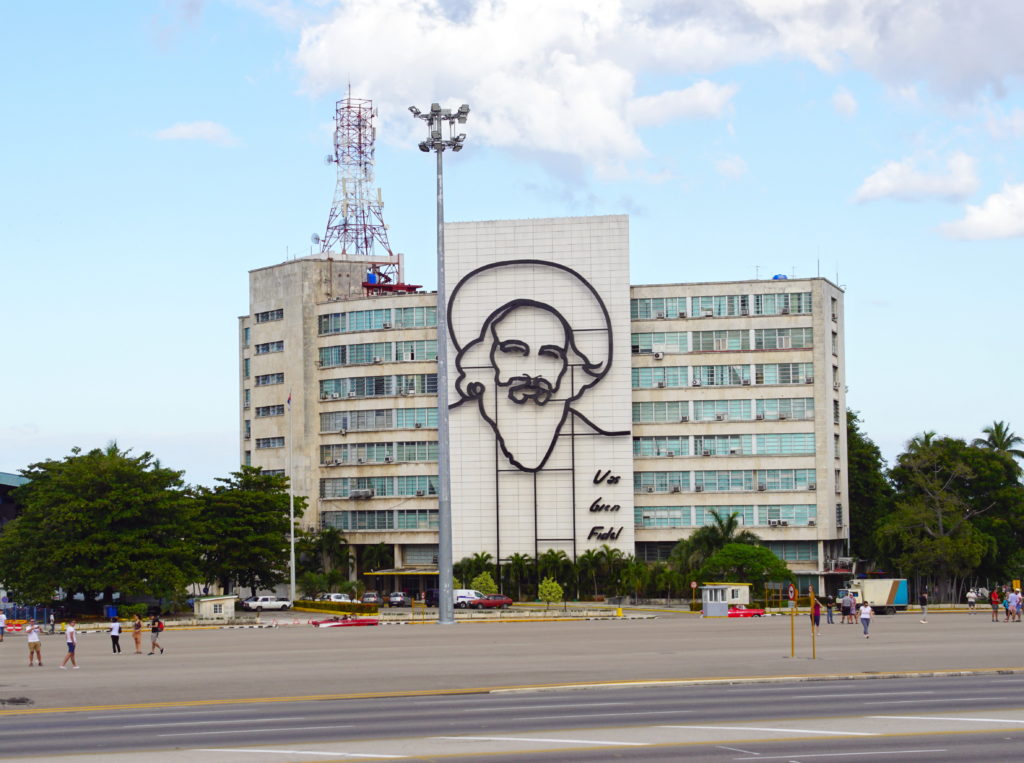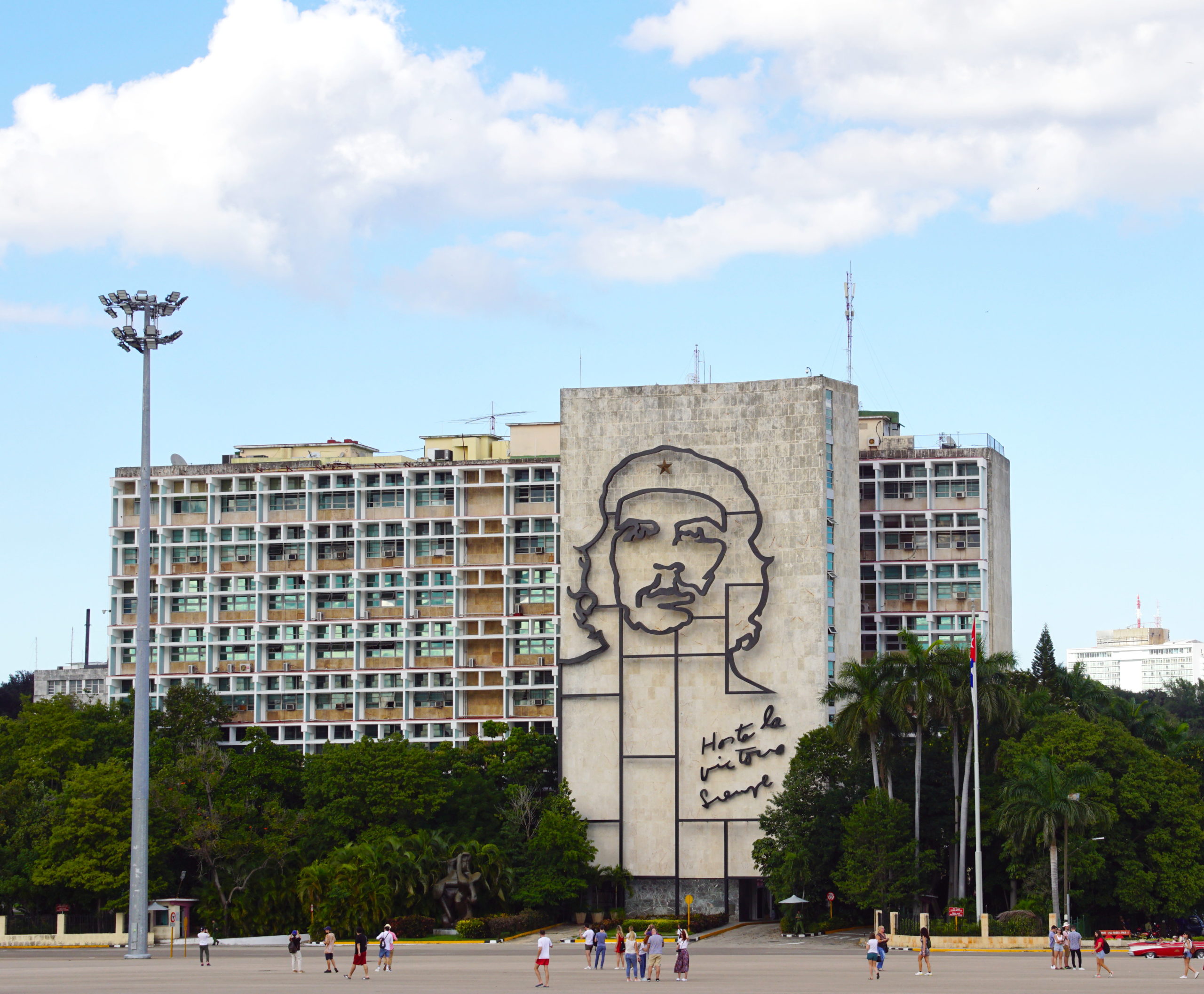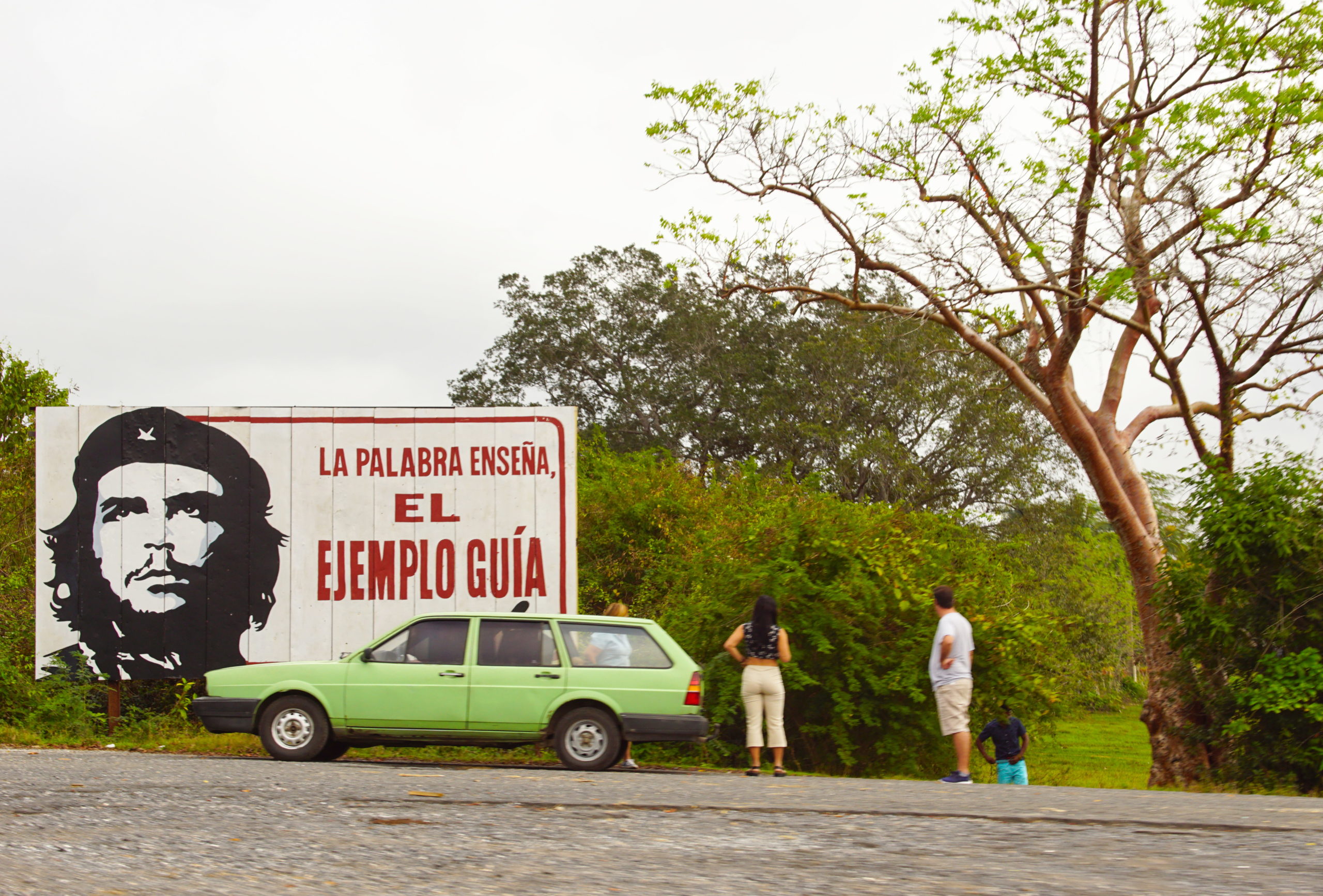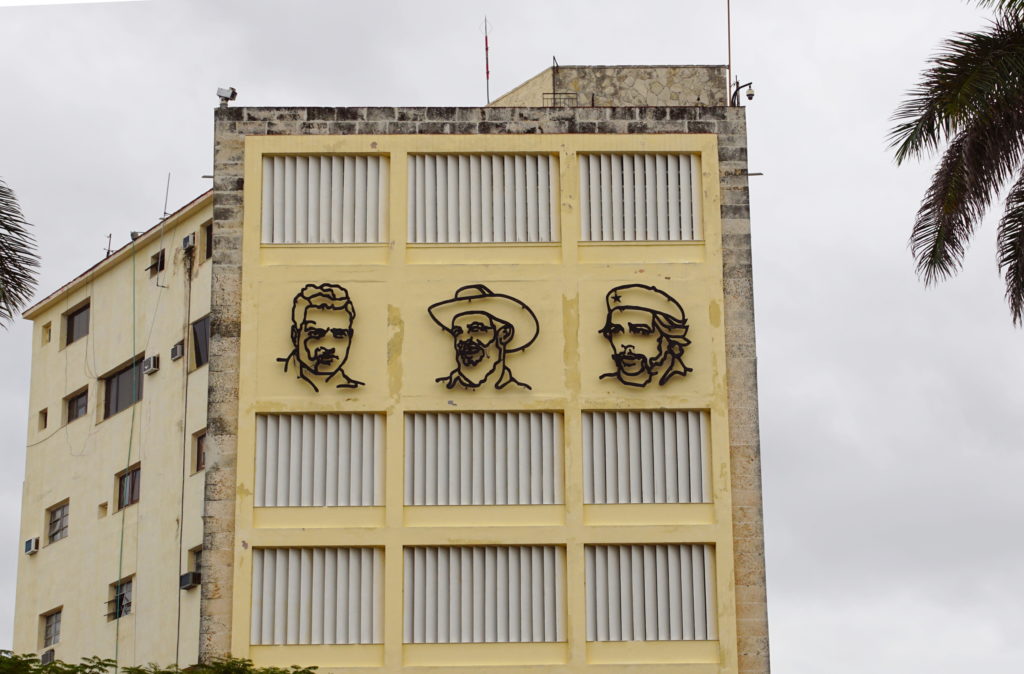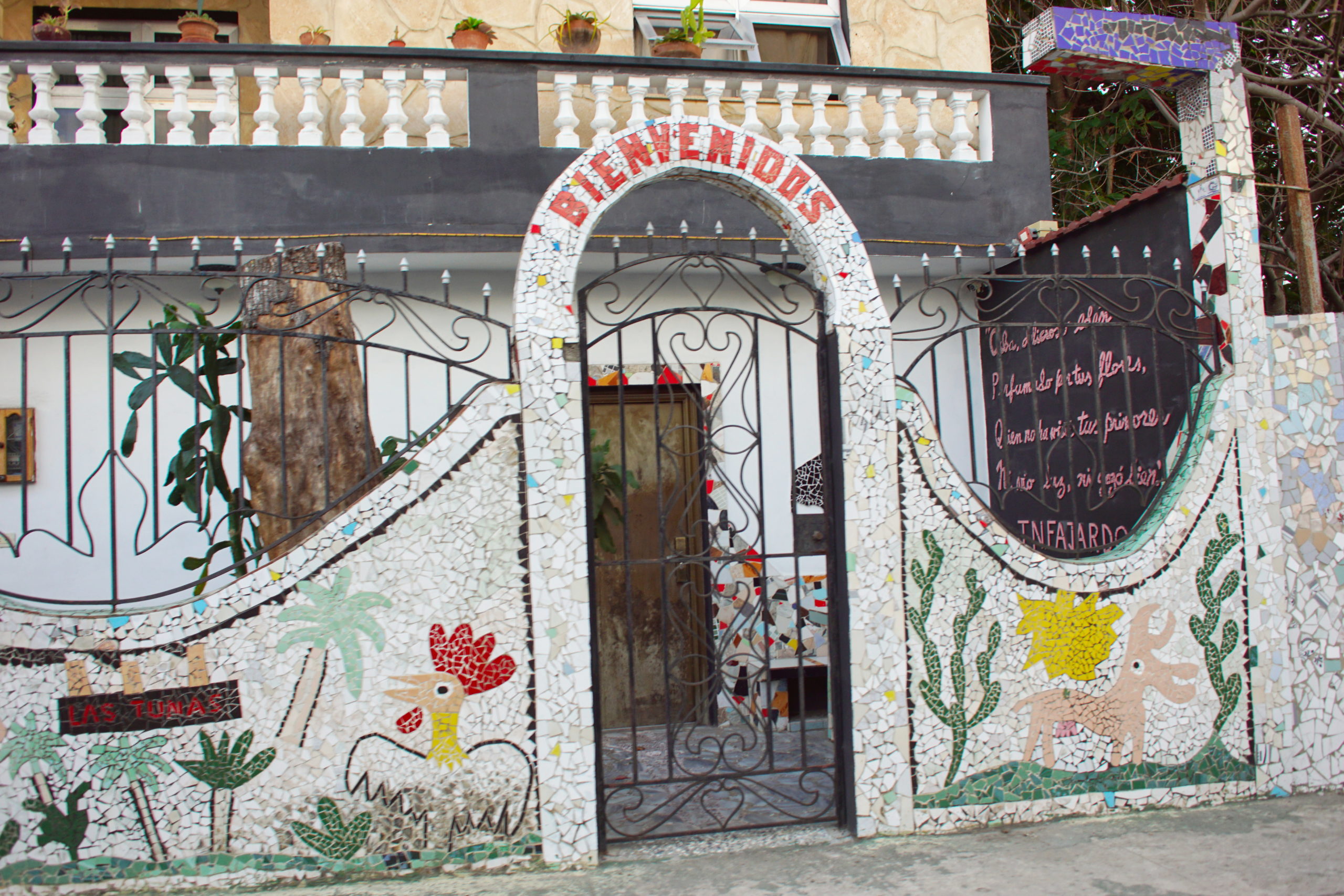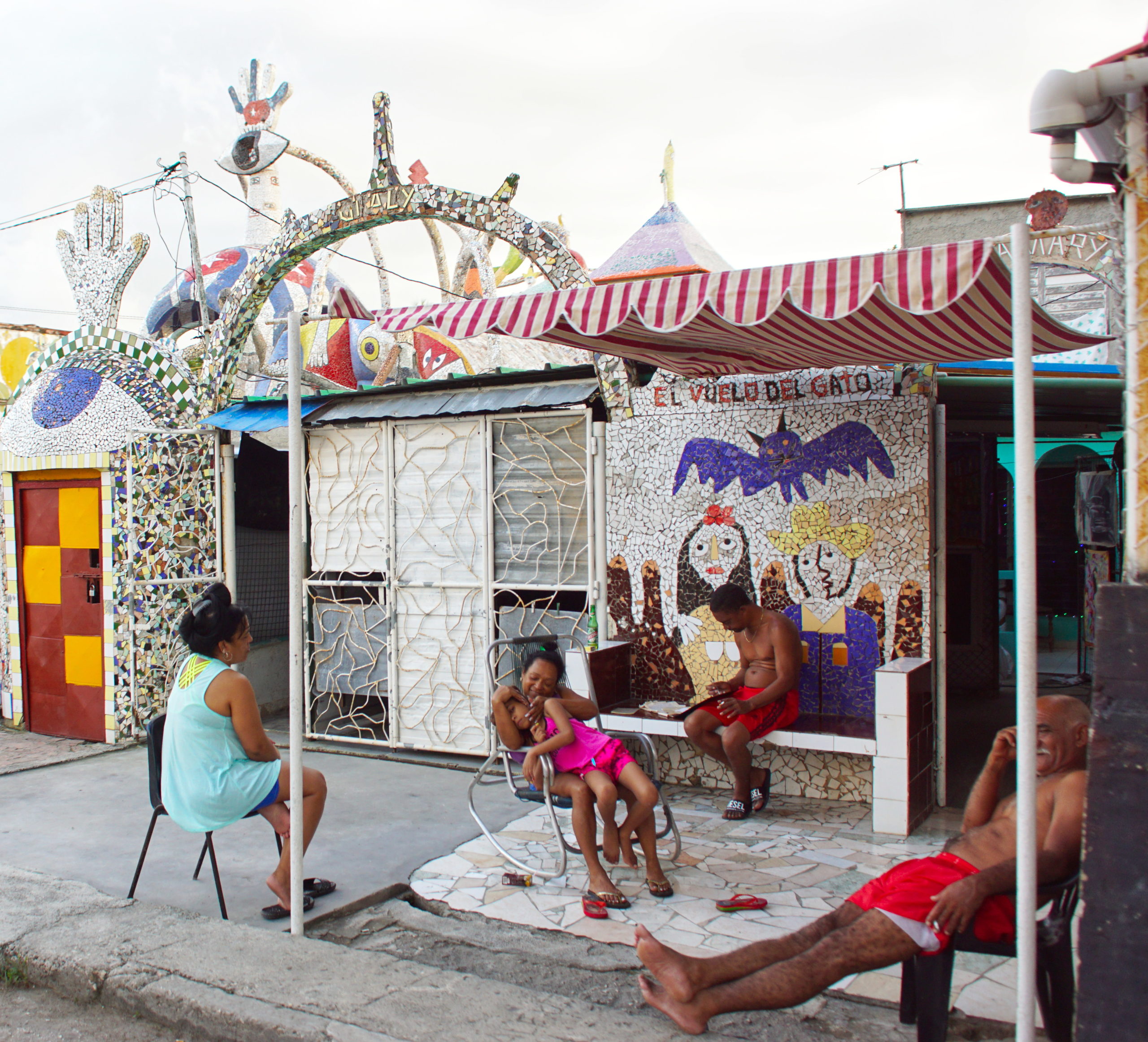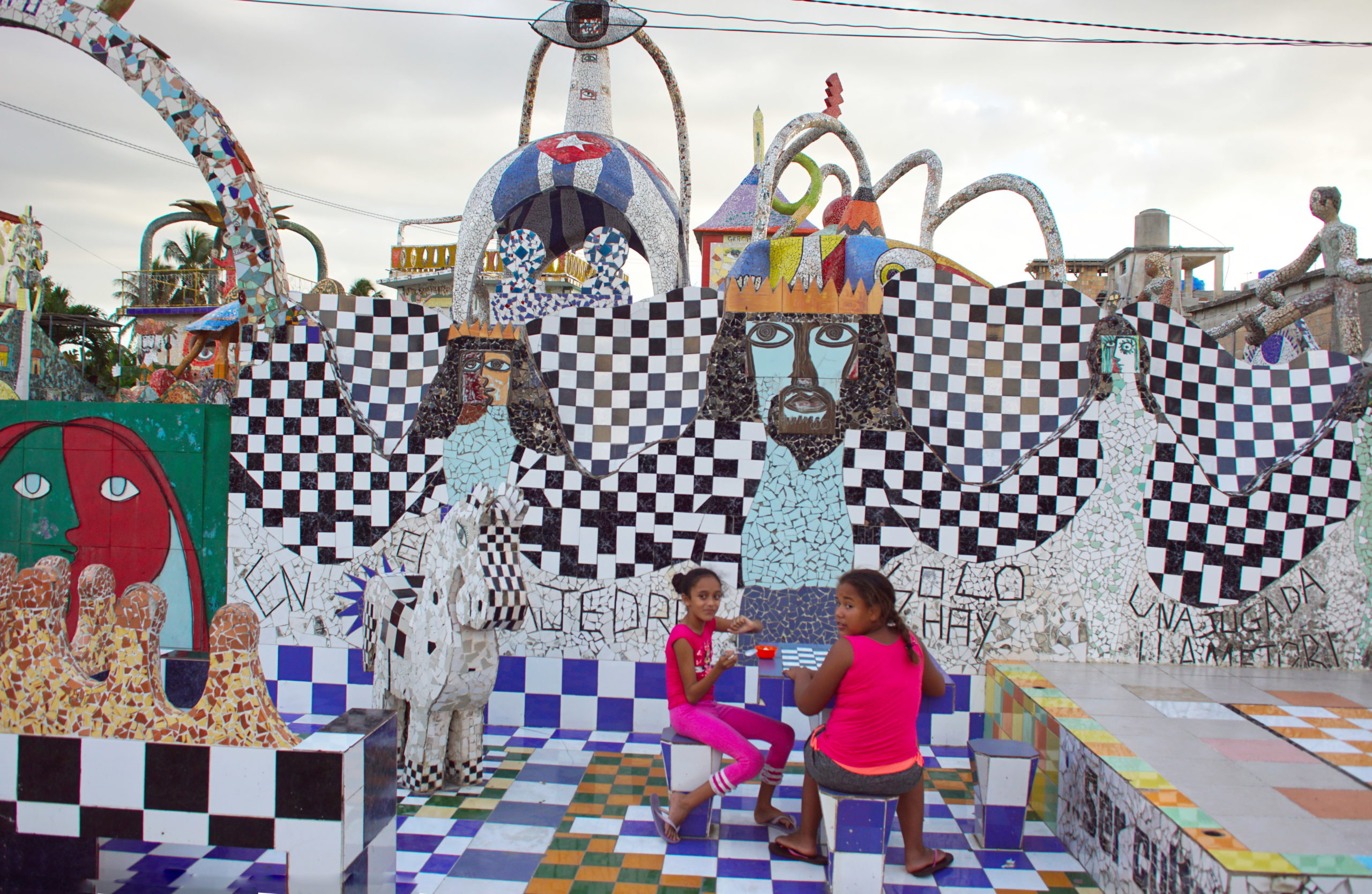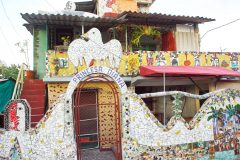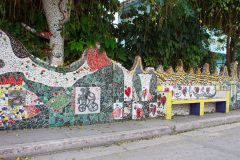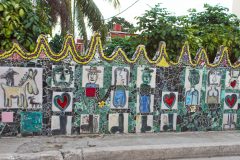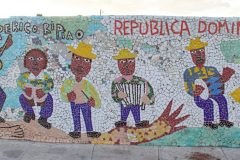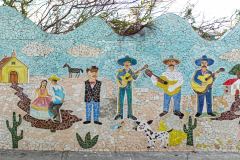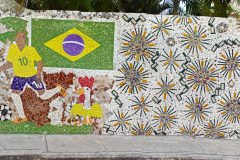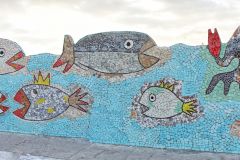Cuba has had a number of cities called La Habana. However, the current San Cristóbal de la Habana was founded on November 16, 1519, and has just celebrated its 500th birthday!
It doesn’t look that old, does it?
Anyway, welcome to our third article on Cuba, where we will look at a bit of the culture found in and around La Habana! And what better way to celebrate culture than the theater?
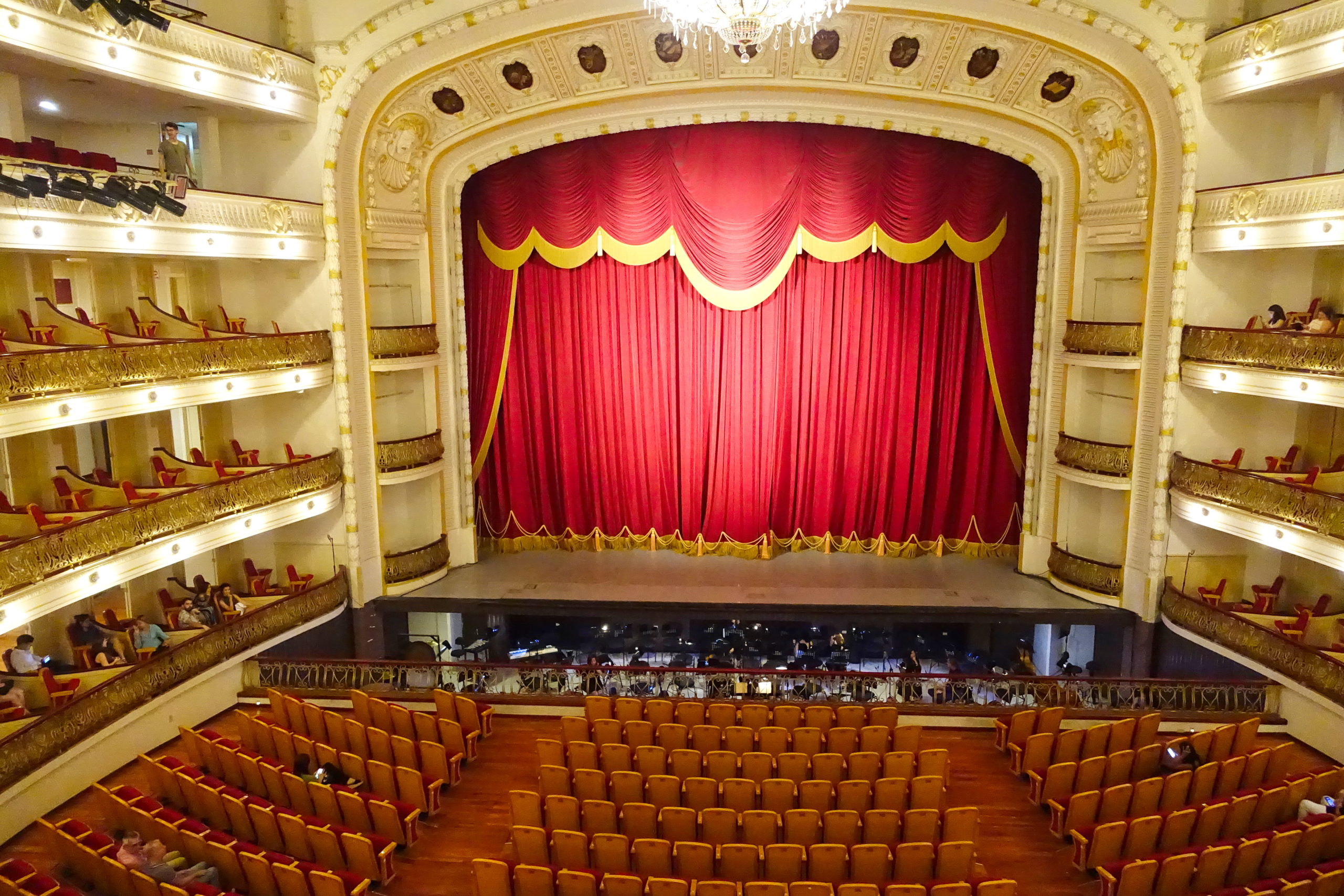
Gran Teatro de La Habana, soon to be filled with dancers, singers, musicians, and patrons of the arts.
As background, the Gran Teatro de La Habana is home to the Cuban National Ballet. It was designed by the Belgian architect Paul Belau and built by Purdy and Henderson, Engineers in 1914 at the site of the former Teatro Tacón. Its construction was paid for by the Galician immigrants of Havana to serve as their community-social center. Located in the Paseo del Prado, its facilities include theaters, a concert hall, conference rooms, a video screening room, as well as an art gallery, a choral center, and several rehearsal halls for dance companies. It hosts the International Ballet Festival of Havana every two years since 1960.
And we are attending the Cuban National Ballet’s production of El Cascanueces, “La quintaesencia de la fantasía”.
The Nutcracker at the Gran Teatro De La Habana
As you probably know, The Nutcracker is an 1892 two-act ballet (“fairy ballet”), originally choreographed by Marius Petipa and Lev Ivanov with a score by Pyotr Ilyich Tchaikovsky. Tchaikovsky’s score has become one of his most famous compositions.
We have attended seminars in which a speaker advises folks to always travel light. “No one needs formal clothes when visiting a foreign country.” Yeah, right.
For 10 cuc, we hire a taxi to drive us to the theater. It’s pretty easy to find. 😀 We arrive about an hour before the performance so that we have time to explore and enjoy.
One of the many advantages of arriving early is the many photo opportunities that arise. The interior is built along classic European lines, looking stately and grand.
The theater has many reference to Alicia Alonso, recently deceased. Alicia Alonso (born Alicia Ernestina de la Caridad del Cobre Martínez del Hoyo; 21 December 1920 – 17 October 2019) was a Cuban prima ballerina assoluta and choreographer whose company became the Ballet Nacional de Cuba in 1955. She is best known for her portrayals of Giselle and the ballet version of Carmen. From the age of nineteen, Alonso was afflicted with an eye condition and became partially blind. Her partners always had to be in the exact place she expected them to be, and she used lights in different parts of the stage to guide herself.
There is a plaque on the wall which reads: El 2 de noviembre de 1993, Alicia Alonso, bailo en este teatro una escena del ballet Giselle, 50 años después de su debut en el personaje, en el Met de Nueva York, 1943-1993.
Her soul will be missed.
There are bars offering rum, wine, mixed drinks, and soft drinks. And, if you dare, you can try a hand-made, hand-wrapped sandwich. We do not avail ourselves of such delicacies, but many people do (the pile of sandwiches was much higher a short while ago). Perhaps we should have; perhaps “ballet and a sandwich” is romantic. Alas, we will never know.
If I were naming parts of a theater, I would never use the word “pit”. I would call it “orchestra chamber” or “orchestra alcove”. Notice how the musician is sitting: this is a perfectly acceptable way to sit if you play the double bass.
Please enjoy these photographs of this magnificent theater.
Our Airbnb superhost, Maria Antonia, arranged our tickets for us, and the seats are wonderful. We take a photograph as a memory.
We wander the theater and enjoy the adventure. The theater signals that the performance is to begin, and we go to our seats—to discover someone sitting in them! We show the attendant our ticket, and she politely asks the people to leave. They adamantly refuse. They argue in fast Spanish for perhaps 30 seconds, yet the interlopers will not budge. Thus, we must cross in front of them and sit directly next to them for the performance. Yes, they could have moved two seats over and sat in the seats they purchased, but they preferred our seats.
(The next day, we ask our superhost, Maria Antonia, if this is normal. She is shocked and says, “No. I would have punched them if they did that to me.” I guess there are dicks everywhere, right?)
So, I pull out my camera and, without any attempt to be subtle, take their photograph, conferring enduring fame upon them as examples of rudeness and bad manners.
But, we digress.
The performance is magnificent, as befitting the Cuban National Ballet. The costumes are splendid, the orchestra is wonderful, and there is a choir that sings during Snow.
Okay, since we are all dressed up, we must include a few photographs of ourselves.
Castillo de los Tres Reyes Magos del Morro
Castillo de los Tres Reyes Magos del Morro (aka Morro Castle), named after the biblical Magi, is a fortress guarding the entrance to Havana bay. The design was drawn up by the Italian engineer Battista Antonelli.
In this case, the Spanish “morro” means a rock which is very visible from the sea and therefore serves as a navigational landmark. Perched on the promontory on the opposite side of the harbor from Old Havana, it can be viewed from miles around as it dominates the port entrance. Built initially in 1589 in response to raids on Havana harbor, el Morro protected the mouth of the harbor with a chain being strung out across the water to the fort at La Punta.
So let’s take a closer look.
We can’t walk to the castle, so we hire a taxi. The route takes us through a tunnel under the harbor (with more than a little smog), and we are deposited near the entrance. We pay a small fee to enter, and voilà.
We are taken by a guide down a long hallway, with no explanation of why this is the main tourist entrance. Obviously, these are arrowslits, and it’s pretty cool, but it seems a pretty obscure way to introduce a fortress.
When we exit the hallway, there is a small tourist area selling food and souvenirs…which explains why the tourists are routed as such. We pause to take photograph of Cuban fighter with blue fingernail polish. 😆
There are few other tourists, which gives us plenty of opportunity to imagine what it might have been like to be a defender in this place, with its narrow hall ways and imposing stone walls. And, isn’t that the cutest little bridge?
While the interior of the castle is confining, the top (roof?) is open and unprotected. Pity the poor soldiers who had to man the cannons; no arrowslits for them!
I imagine, during a battle, this area was full of men firing cannons, resupplying cannonballs, and restocking gunpowder, and that one lucky shot from an enemy cannon would be, well, spectacular.
I wonder how they were able to calibrate the cannons. I mean, if I had a ship and wanted to attack Havana, I’d sail as close to the city as I could, hoping the cannons would overshoot, saving me the trouble of bombarding the city.
There is a lighthouse here, but the entrance is closed and there are no employees to be found. Don’t know how those other folks got up there; perhaps it must be arranged in advance.
There are two examples in the castle of the toilets used by the defenders. As with many castle toilets, the refuse simply falls down the exterior wall. Note how well-constructed the enclosure is: safety while pooping is important!
Enjoy other photographs of Castillo Del Morro!
Deep in the bowels of the castle is a small chapel where saints and sinners could ask their gods for help in defeating the enemy. Those lights are electric, but I imagine that this place was choked with smoke during earlier times.
The castle has an abundance of vistas, and we capture a few, using an application to create panoramas.
Enjoy our Panorama Gallery
Museo Nacional de Artes Decorativas
The Museo Nacional de Artes Decorativas is a decorative arts museum in the former residence of the María Luisa Gómez-Mena viuda de Cagiga, Countess of Revilla de Camargo, sister of José Gómez-Mena Vila, the owner of the Manzana de Gómez. It was designed in Paris by architects P. Virad and M. Destuque, inspired in French Renaissance and was built between 1924 and 1927 in a neo-classical style. “Aristocratic wealth, taste and passion are revealed through the more than 33,000 works of artistic and historic value from the reigns of Louis XV, Louis XVI and Napoleon III, as well as Oriental pieces from the 16th to the 20th centuries. Also on display are important collections of Sèvres, Chantilly, Limoges, Faenza, Meissen Derby, Chelsea, Wedgwood, Worcester and Staffordshire porcelain.”
And it is within walking distance of our Airbnb. 😀
Even if you don’t know the exact address, the exterior of the building is distinctive in that it is well-kept and decorated artsy. (Hence, the name of the museum.)
So that you are not getting excited about a food exhibition…Biscuit porcelain is unglazed white porcelain treated as a final product, with a matte appearance and texture to the touch. It has been widely used in European pottery, mainly for sculptural and decorative objects that are not tableware and so do not need a glaze for protection.
We first walk about the ground to enjoy the artistry.
The posterior courtyard is somewhat bare, but perhaps XIX siglo art can’t handle the Cuban heat and humidity.
So, let’s go inside!
Although we are not in a tour, we have a guide hovering about, ensuring we follow a prescribed route and that we don’t touch anything or walk on forbidden floors. Indeed, the rooms are very beautiful.
On initial glance, this seems simple to make. But we have no idea how the wavy lines were made. Or why the head was made separately.
This glass bird seems like it would be easier to make, but the head doesn’t fit correctly. Perhaps it’s wearing someone else’s head…?
I was taught, “Elbows off the table.” It’s very different in some European countries where children as taught, “What are you doing down there? Hands on the table.” Why she is decapitated remains a mystery.
A display of fine porcelain and glass, displayed a safe distance from clumsy tourists, displays stickers reminding us that they are vintage.
With all the activity and elegance of this picture, Hubert Robert (1737-1808) named it “el columpio”. I think he is lucky we even notice it.
A beautiful setting atop a white cloth, with long ends just asking for someone to trip on them and send the priceless dishes flying through the air to smash on the wall, the cutlery to embed in soft 19th century flesh, and the candles to set the room afire. No, this dining experience was not well-considered.
This might not be a serving dish. Perhaps it’s a chaffing dish, a large bowl for soup, or a fancy spittoon. However, the artistry and details are wonderful.
Armario medallero defort el joven francia, siglo XIX, madera y bronce, y cuerno de caza francia, Ca. 1640, marfil. People don’t carve elephant teeth anymore, but I imagine it was a sought-after skill in 1640.
A well-preserved aneroid barometer and thermometer in wood, brass, and glass hangs from the wall.
Highlighted by the morning sun, the bust of a woman graces a pedestal, perfectly framed by the other displays, the posts and the window.
A different perspective contrasts the 19th century with Cuban life in the 21st century.
Photographs of the reception offered to the Dukes of Windsor, the Duchess of Alba and the Counts of Barcelona back in the heyday of Cuban culture, the 1940s and 1950s.
The museum has many displays dedicated to bronze workings.
This French version of a Harlequin stands ready with a stick, possibly to smack someone. According to the internet, “Harlequin inherits his physical agility and his trickster qualities, as well as his name, from a mischievous ‘devil‘ character in medieval passion plays.” So, don’t mess with this guy.
This closeup of the candelabros “pareja de faunos” shows an atypical interpretation. Usually, the human half of fauns is depicted as male; in this case, the artist Claude-Michel Clodion included a female goat-creature. (You can see both statues below.)
A few of the many beautiful works of bronze in the museum.
Although Neptune is the God of freshwater and the sea, he is also the God of horses, under the name Neptunus Equester, a patron of horse racing. He is surrounded by such beasts, along with fish-like creatures, mermen and mermaids, and non-mer children. Kinda confusing, actually.
We have read that, before Botox and boob jobs, women promoted their youth by displaying breasts and nipples that had not been despoiled by nursing infants. In other words, they were either rich or virgins. Yes, the old ways are better.
Please enjoy more excellent examples of porcelain artworks.
The museum has four very similar statues, each perfectly balanced on two legs. Looking closely, they seem off-balance to me, but they are not—which is why I’m not a creator of porcelain statues. We were very careful to keep our distance, lest we cause an international incident.
Please enjoy these exquisite statues.
We leave you with François Boucher‘s Alegoria a la musica, and let you decide what the allegory might be.
Cuban Monuments
Mariana Grajales Park is right across the Saúl Delgado High School. The monument in the center of the park is that of Mariana Grajales, mother of Lt. General Antonio Maceo Grajales, hero of the Wars of Independence. Mariana is considered the “Mother of Cuba” as all of her 12 children participated in the Wars of Independence. She and her daughters also served in the war running hospitals and provision grounds.
This is a monument to the victims of the USS Maine.
The American battleship Maine exploded in the Havana harbor on February 15, 1898, killing two officers and 250 sailors. Fourteen more of the men eventually died, bringing the death toll to a total 266. Fifteen years after the explosion of the USS Maine in 1913, President of the Cuban Republic Mario García Menocal erected a monument on the Malecón in honor of the victims. There were originally three busts of Americans: President William McKinley, who declared war on Spain; Leonard Wood, first military governor in Cuba, and President Theodore Roosevelt. On July 4th, 1943, a fourth bust was added—that of Andrew Summers Rowan, the army officer who was said to have carried a message to General Calixto Garcia just prior to the start of the Spanish-American War. The columns once held a bronze eagle with open wings. In 1961, the eagle and busts of the Americans were removed and are now in the US embassy in Havana.
José Miguel Gómez y Gómez was one of the leaders of the rebel forces in the Cuban War of Independence and President of Cuba from 1909 to 1913, and for that was given one of the most lavish monument in Havana.
If you look closely, one of the statues on Mr. José Miguel Gómez’s monument has been decorated with might be a political statement protesting government suppression or might be a tribute to some young man’s special girl. Or perhaps both. We shall never know.
The monument to General Máximo Gómez y Báez honors the military commander of Cuba’s War of Independence. Among the General’s notoriety is that he was shot in the neck in 1875 while he was leading the failed attempt to invade Western Cuba. He then always wore a kerchief around his neck to cover the bullet hole, which remained open after it healed (he usually plugged it with a wad of cotton).
Also, this is the backside of the monument, which accounts for all the backsides. 😳
A nondescript building in Havana hosts a statue of Mercury, the God of financial gain, commerce, eloquence, messages, communication (including divination), travelers, boundaries, luck, trickery, and thieves; he also serves as the guide of souls to the underworld. We do not know what brings him to Cuba.
The Christian saint Francis of Assisi is depicted as a bronze statue, with a beard just perfect for rubbing to a natural shine. Since Francis never visited Cuba, we don’t know why this is here.
This lonely bronze artwork in a green square is called Primavera and celebrates the spirit of Cuban women. It was created for the 2015 Havana Biennial, and is a study in movement and sensuality inspired by dancers from the Cuban National Ballet.
Please enjoy these photographs of other Havana monuments.
Factories
According to the internet, industrial production accounted for almost 37% of Cuban GDP, or US$6.9 billion and employed 24% of the population, or 2,671,000 people,
This is a composite photograph of a large factory in Havana, near the harbor. As I attempt to take a photograph of the front of the factory, a security guard comes out and indicates that I cannot take such photographs. I don’t know why this would be a forbidden place, but there you have it.
The harbor of Havana is home to many factories and industries. The internet reports that “As a harbor almost completely surrounded by shipping and industrial activities, the waters of the bay suffer from environmental stress. This in turn affects the water quality of the Caribbean Sea into which it flows. Water entering the bay as river flows or effluent from industrial processes has a residence in the harbor of 8 days, on average. It receives approximately 48,000 m3 of waste water per day, which carries about 4,800 kg of nitrogen and 1,200 kg of phosphorus, which results in elevated concentrations of nutrients. Havana Bay is strongly affected by sewage dumping, and it also receives suspended solids, hydrocarbons, heavy metals and pollutants from agriculture, industry and port activities. The leading sources of pollution in the bay have been identified as the Luyano River (which contains organic material, nutrients, sewage, and solid waste), the Regla oil refinery, fish hatcheries, and port activities. The high concentration of hydrocarbons, heavy metals, and other pollutants is of concern as the harbor is an important fishing port.”
Yikes!
National Heroes
Like any nation, Cuba has many national heroes. But there are a few who dominate the landscape.
In the Plaza de la Revolución are murals to the two most important deceased heroes of the Cuban Revolution. This bearded fellow is Camilo Cienfuegos Gorriarán, one of our beloved Fidel Castro‘s top guerrilla commanders (Note: Cubans refer to Mr. Castro as “Fidel”.) The words translate to “You’re doing well, Fidel,” so Fidel has that going for him, which is nice.
Ernesto “Che” Guevara was an Argentine Marxist revolutionary, physician, author, guerrilla leader, diplomat, military theorist, and tee-shirt model. He was second-in-command of Fidel’s military forces and played a pivotal role in the victorious two-year guerrilla campaign that deposed the Batista regime.
Che’s likeness is more prevalent than Fidel’s, and, in an emergency, can be used to create privacy during an unplanned rest stop.
This one (like many things in Cuba) is a bit of a mystery to us. There is no indication of the identity of the fellow on the left. It might be Fidel, but Fidel always had facial hair. José Martí, another popular national hero, had a mustache and high forehead. I guess we should have asked someone….
Fusterlandia
Finally, the section you’ve all been waiting for: Fusterlandia!!
Whenever we ask the locals what we should see while in Havana, they tell us “Fusterlandia,” as if it is as well known as Disneyland or Paris. So, when we hire a classic car to show us the sights, we ask them to take us there, without really knowing what we are getting into.
Fusterlandia is “an impoverished neighborhood reclaimed as a dreamy folk art kingdom” by José Fuster. Yup, it’s a free-form tile mural covering most structures of a small neighborhood.
There are few other tourists here (and we are obviously tourists, given that we are traveling in a bright pink convertible). The locals pay us no mind as we drive past “el vuelo del gato,” looking more like a murciélago.
Two children enjoy ice cream (or something that looks like ice cream) as giants stride through their neighborhood. The Red Queen would have approved.
We don’t know what the tubes were before they were covered with tile, or, basically, what any of it represents. Maybe nothing…? I wonder what kind of dreams these folks have at night….
Enjoy our gallery of Fusterlandia!
And so, we draw a close to our third article on the wonders of Cuban Culture. We’ll be back in a couple of weeks with more wacky adventures here in La Habana!

